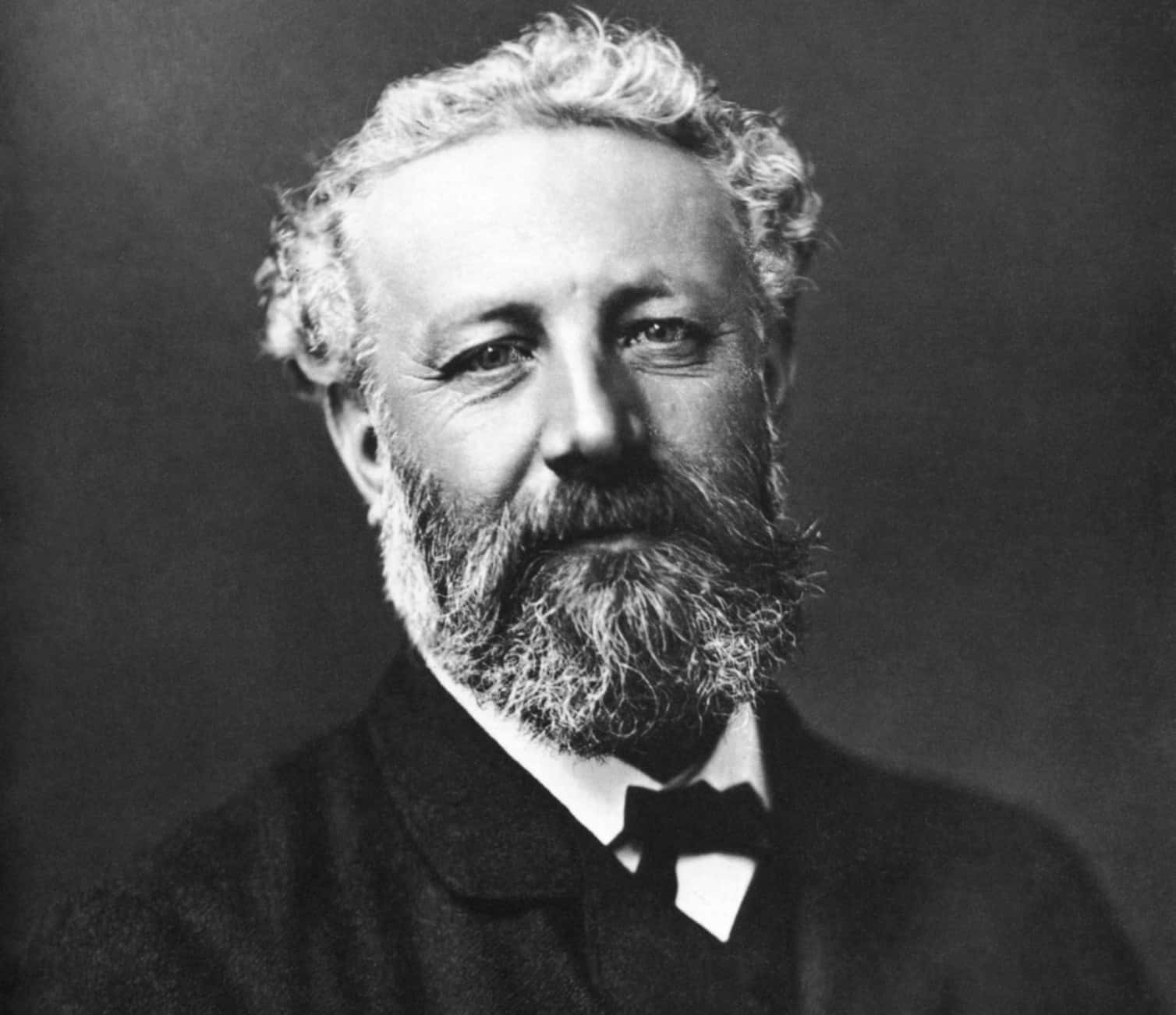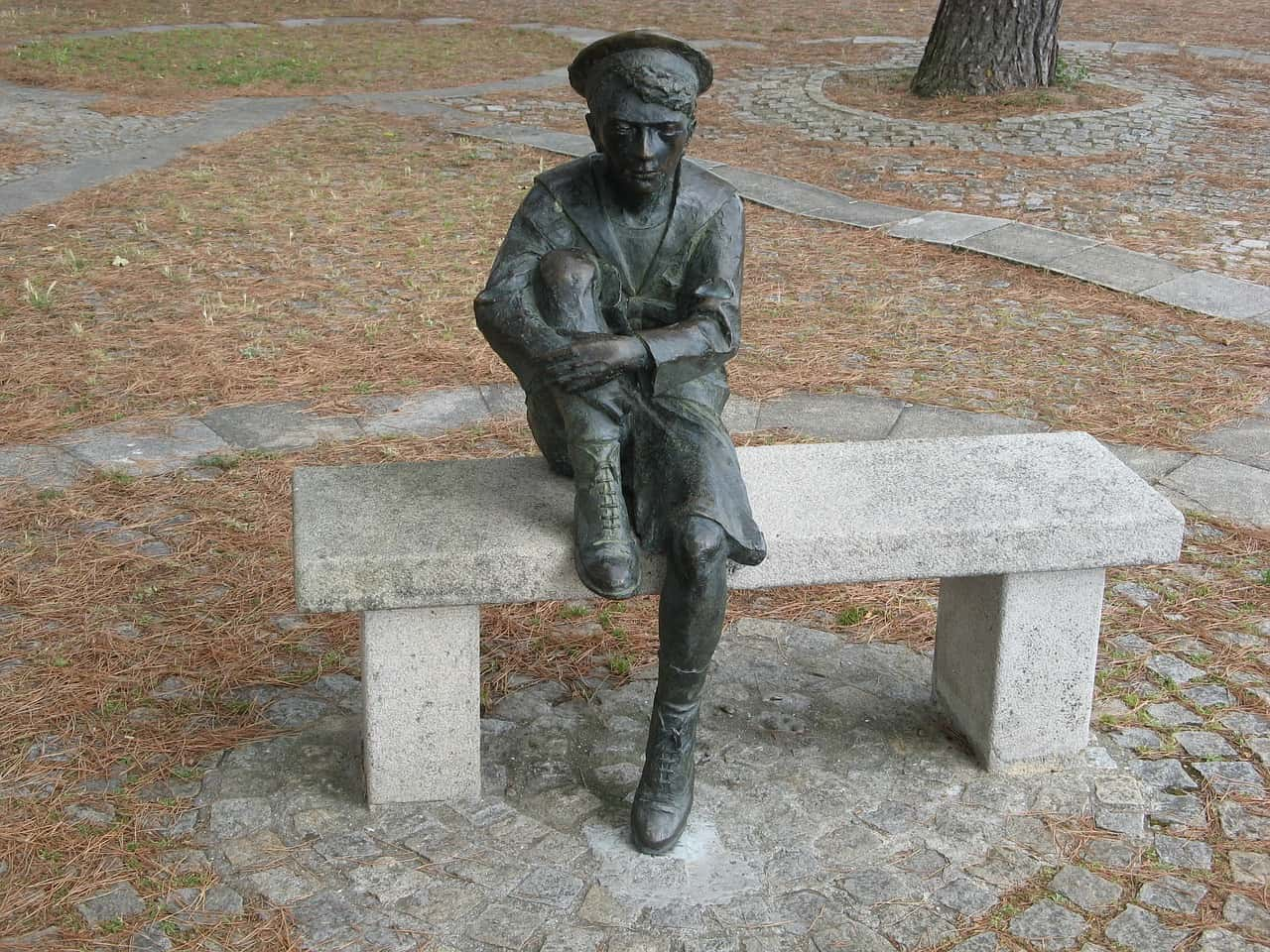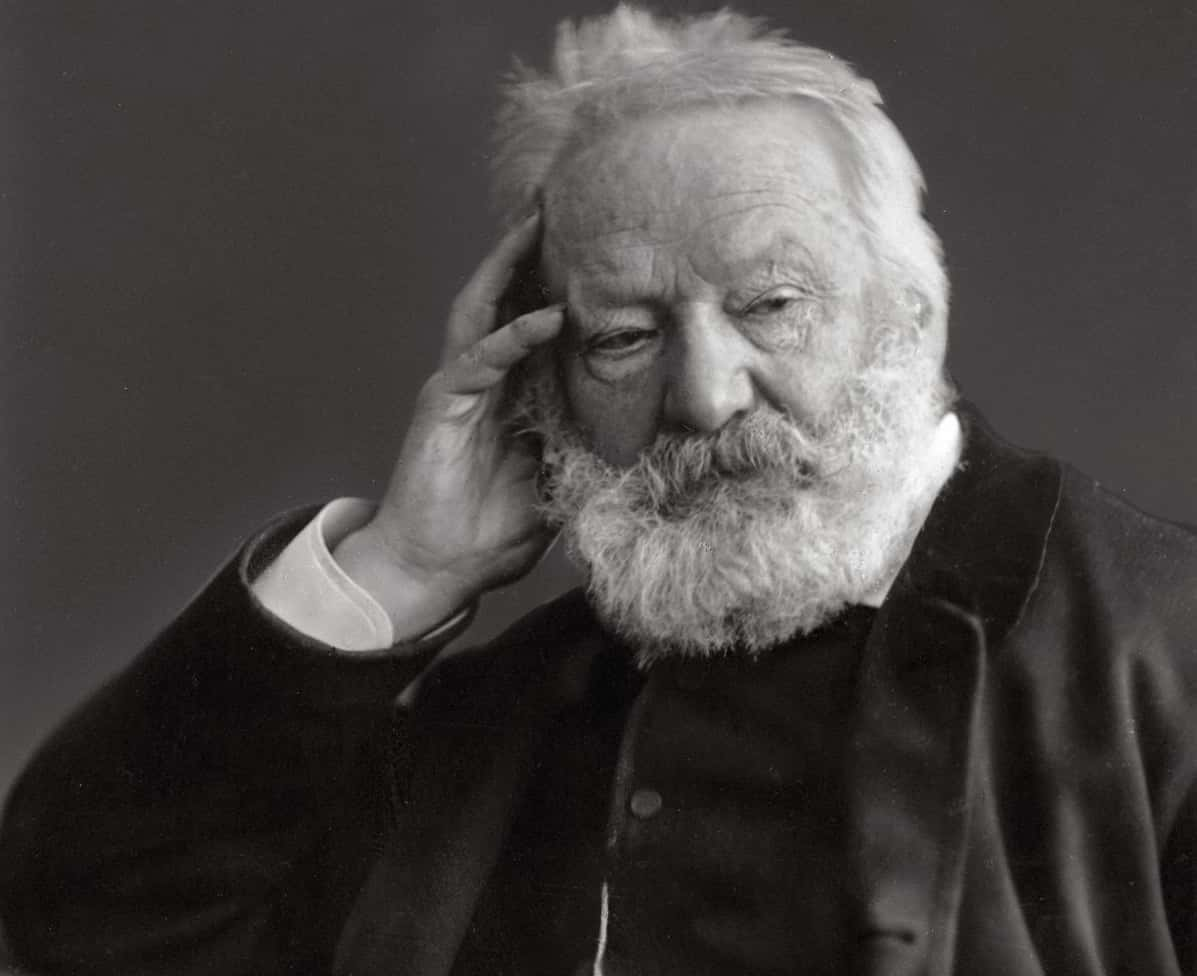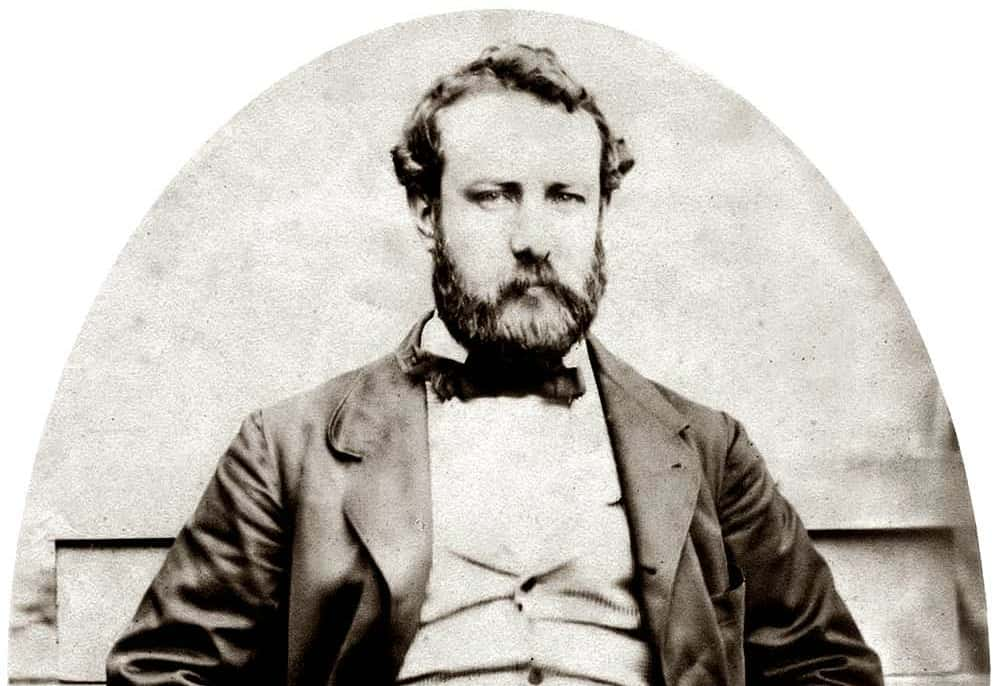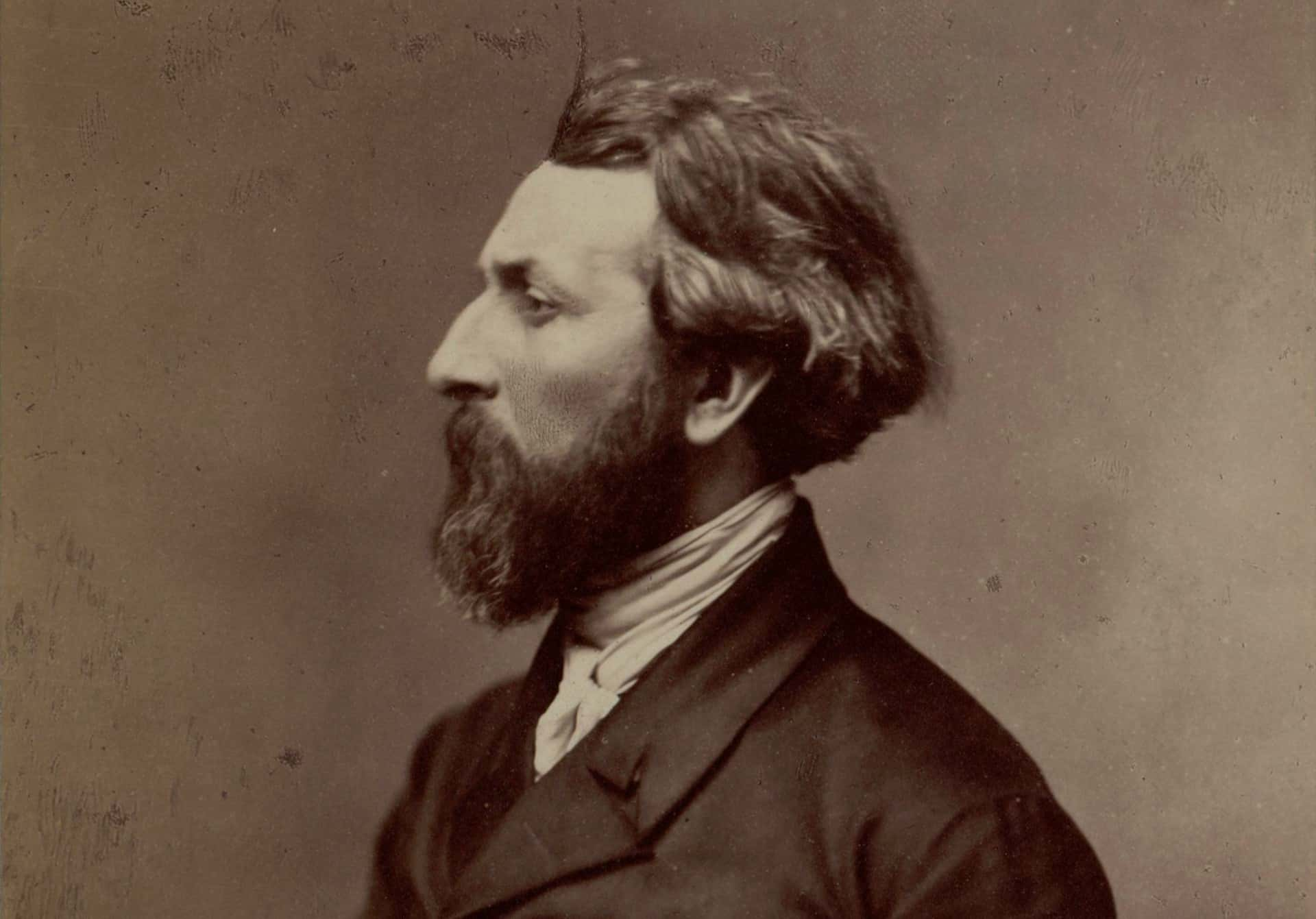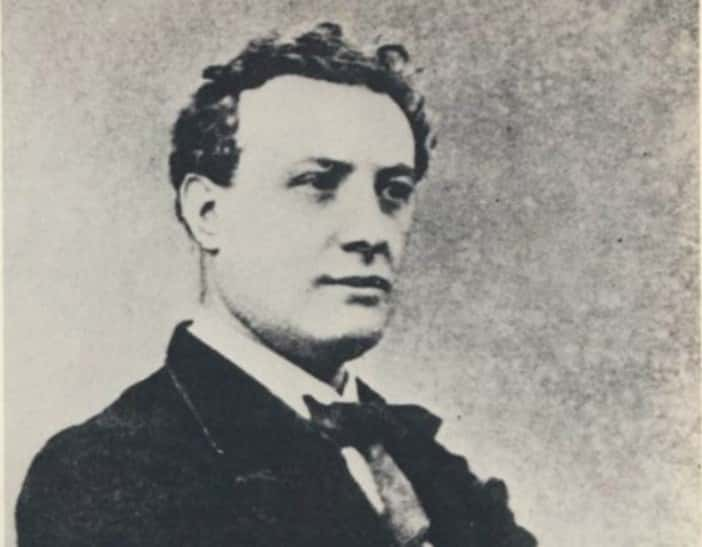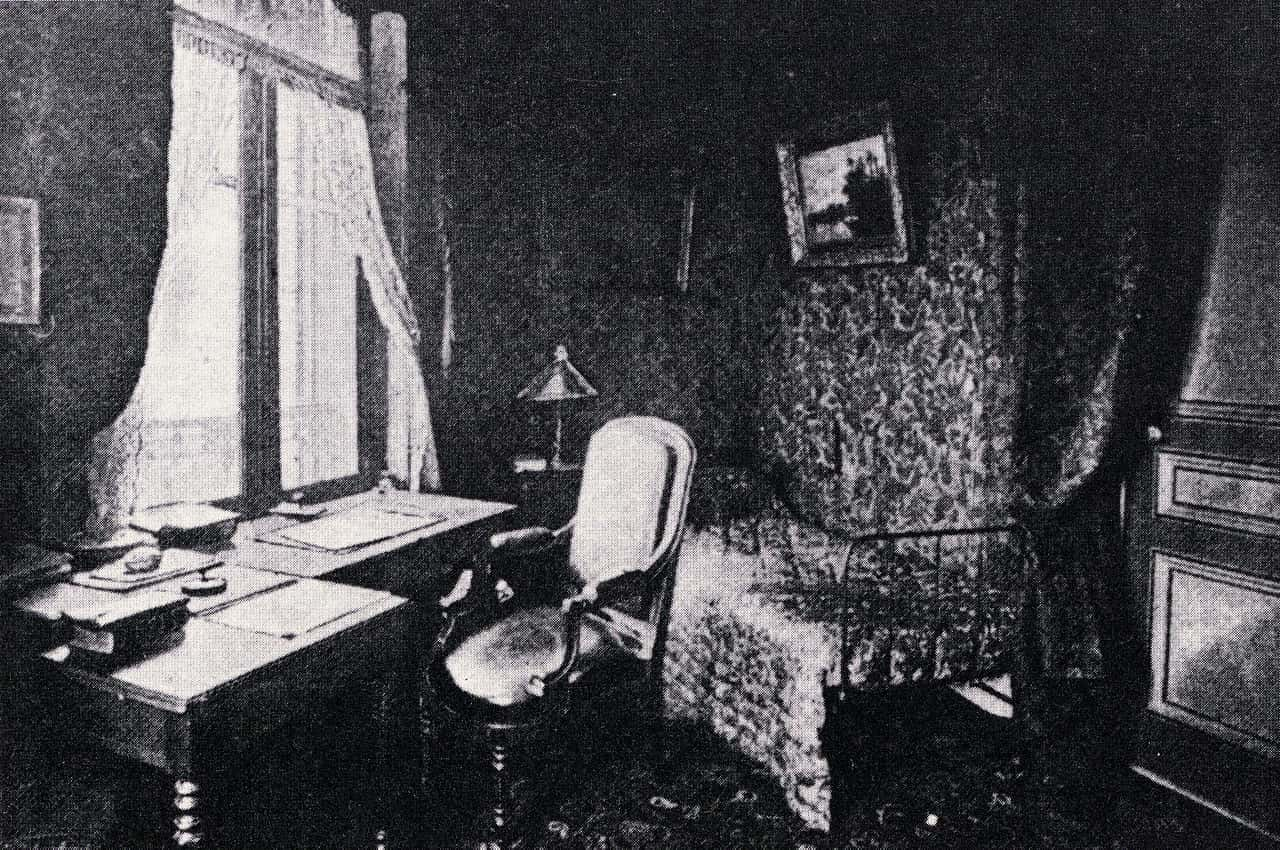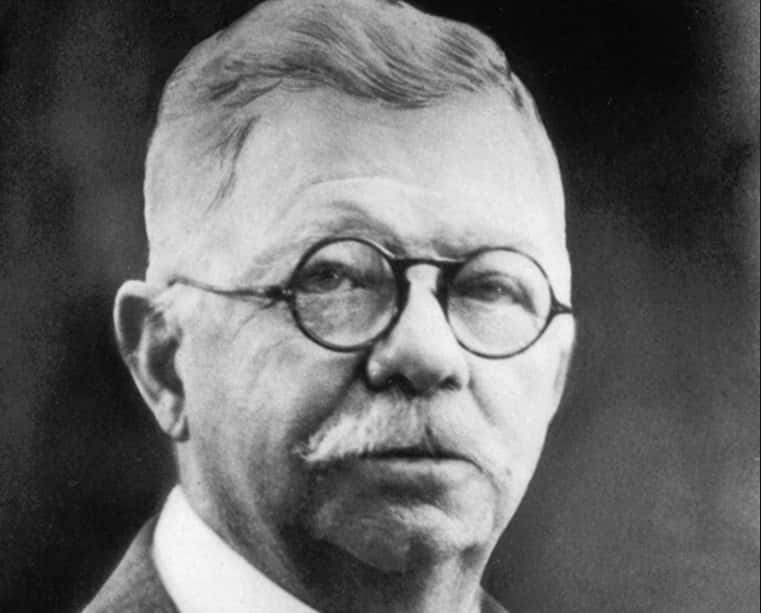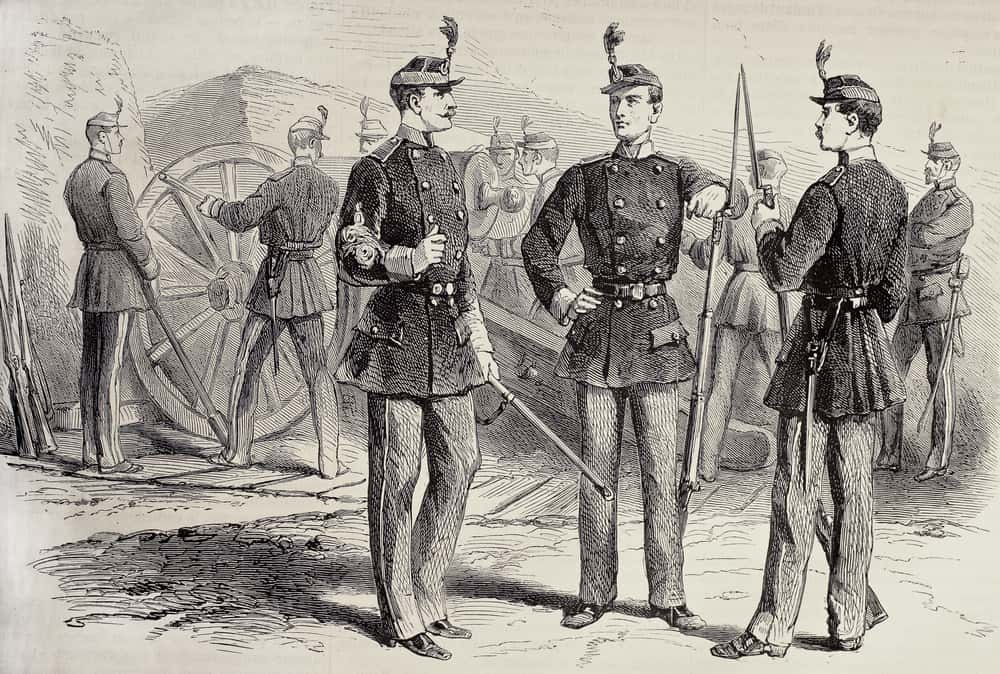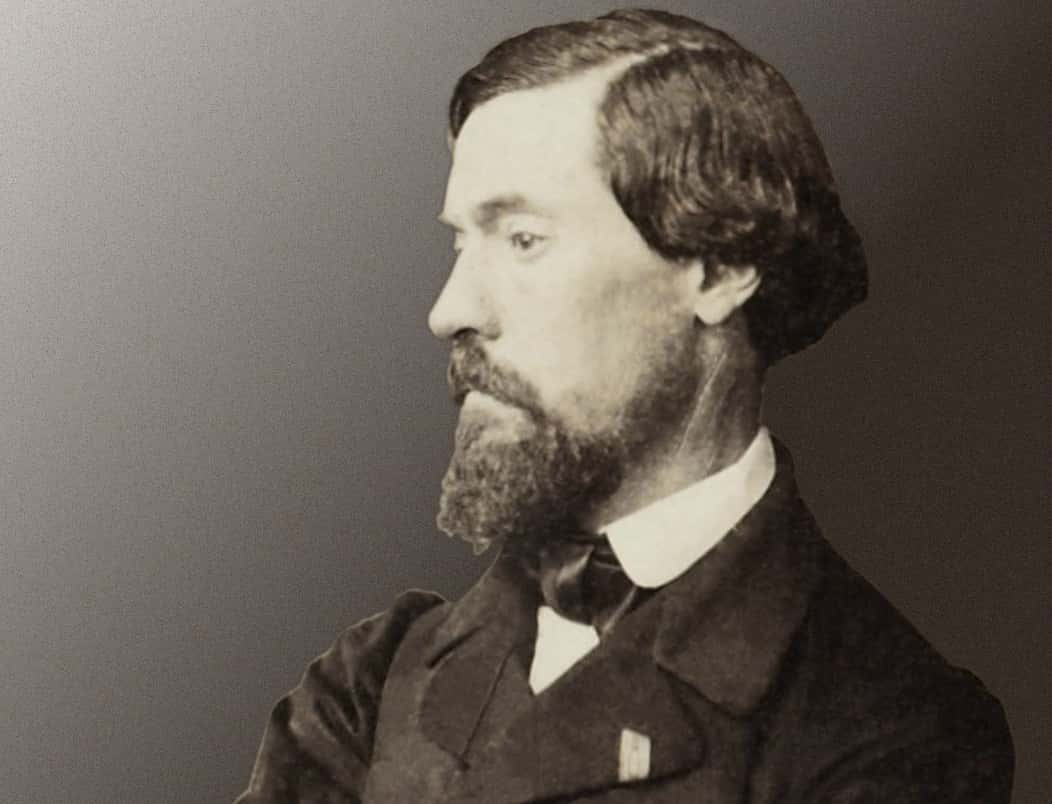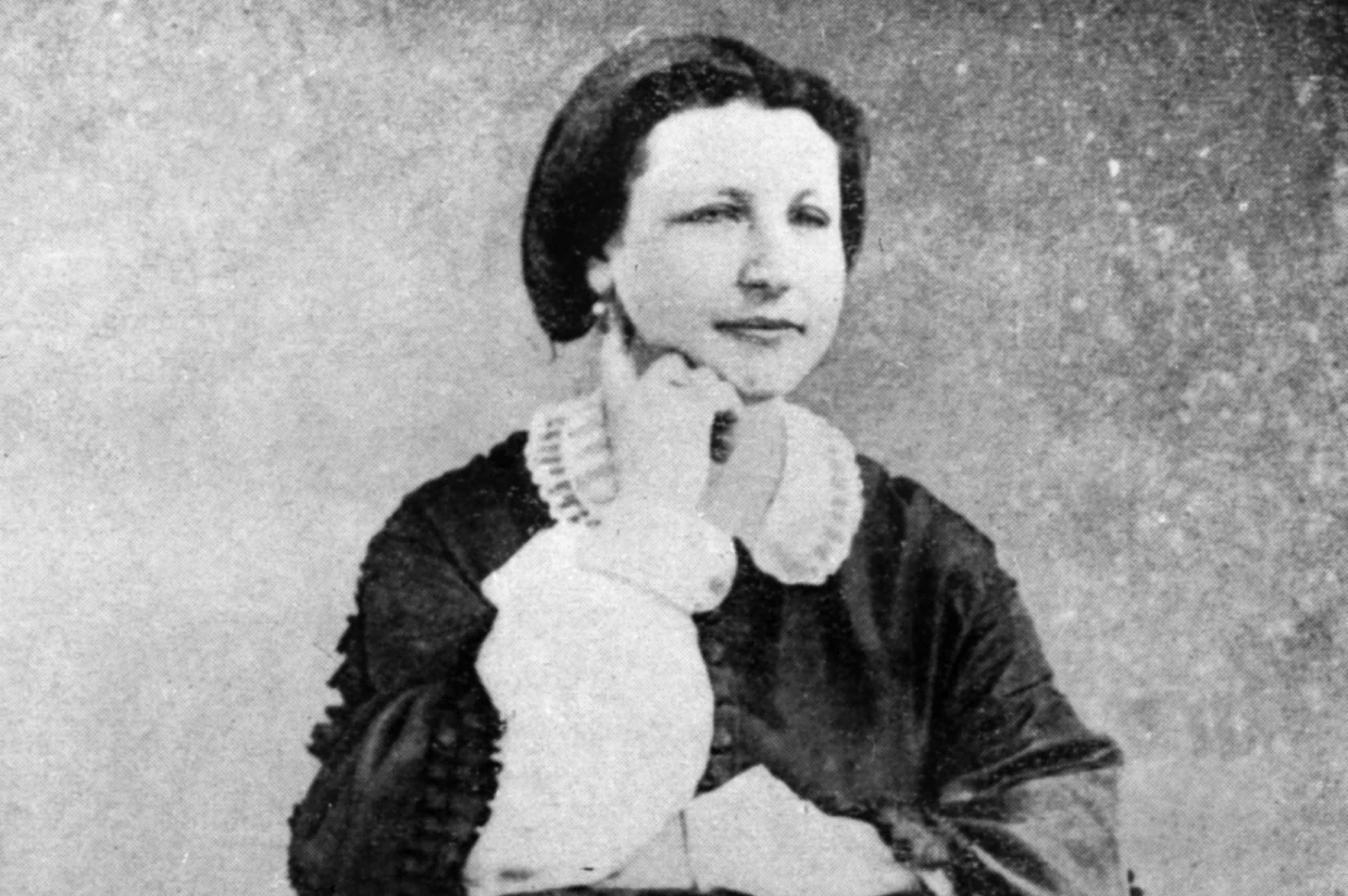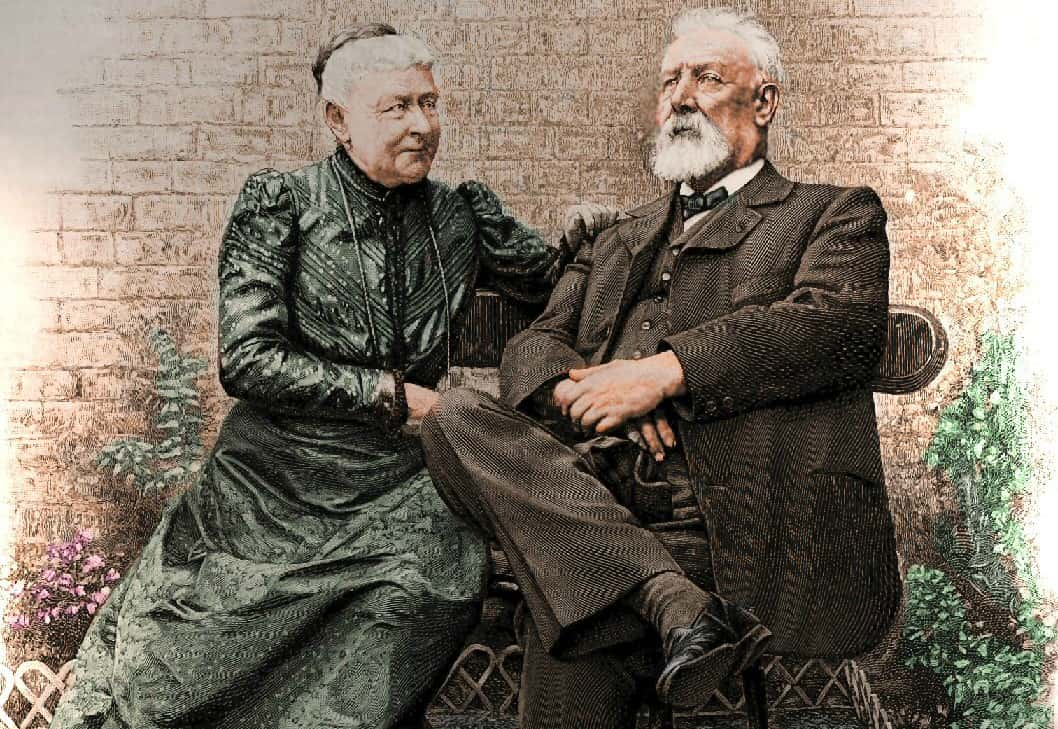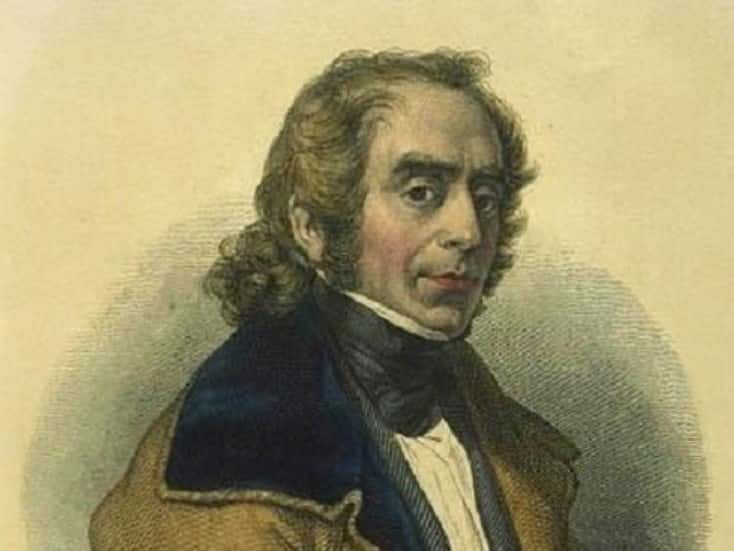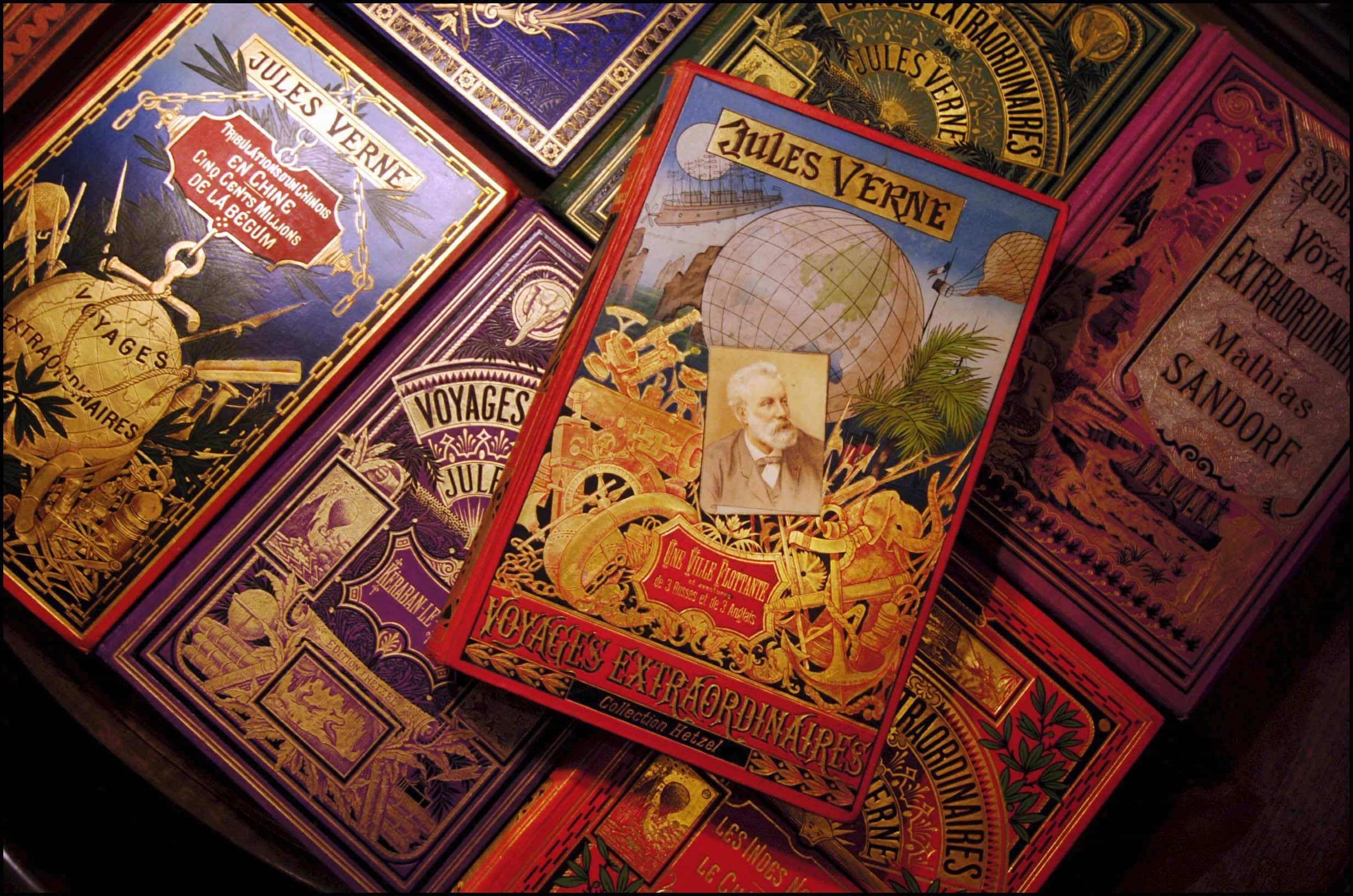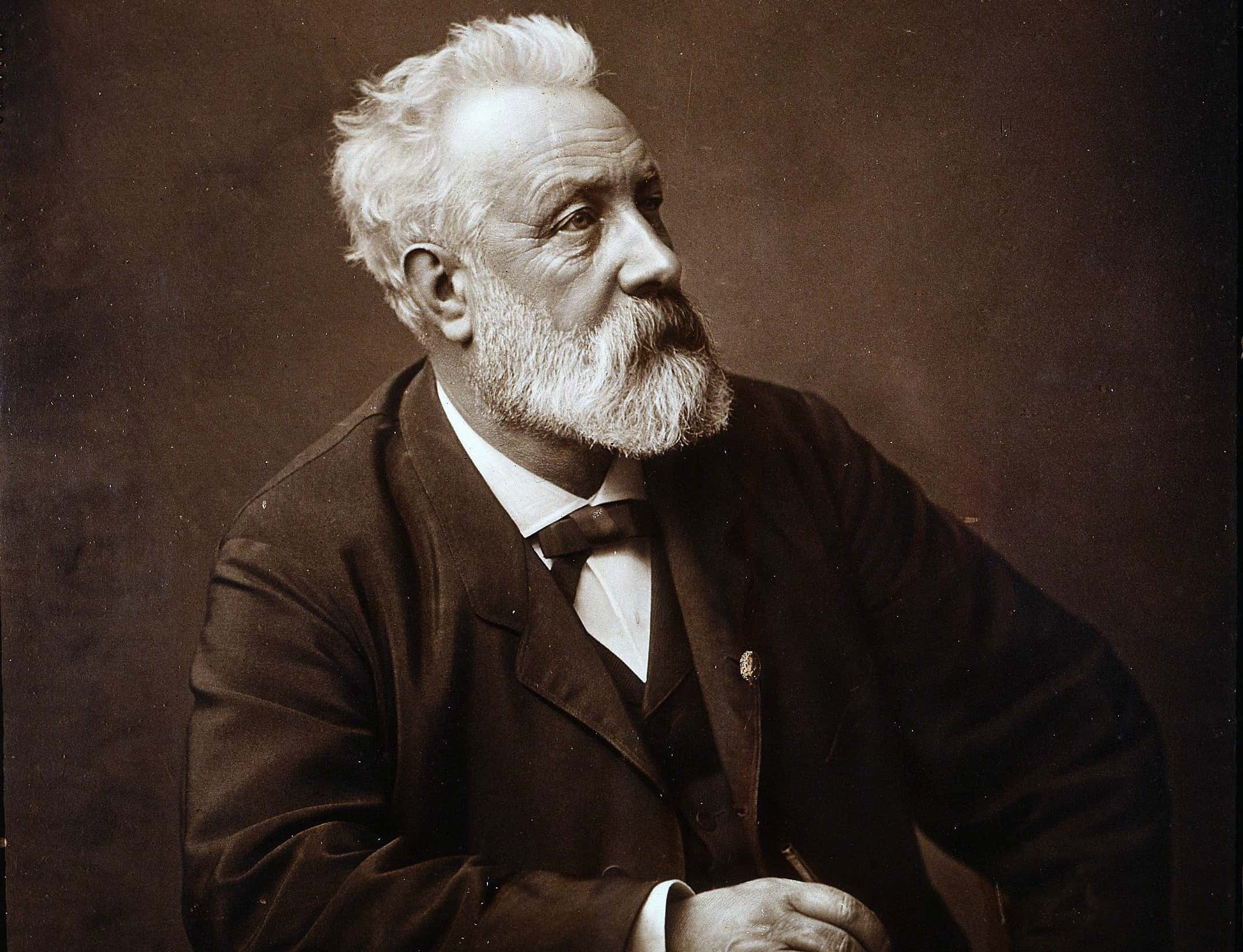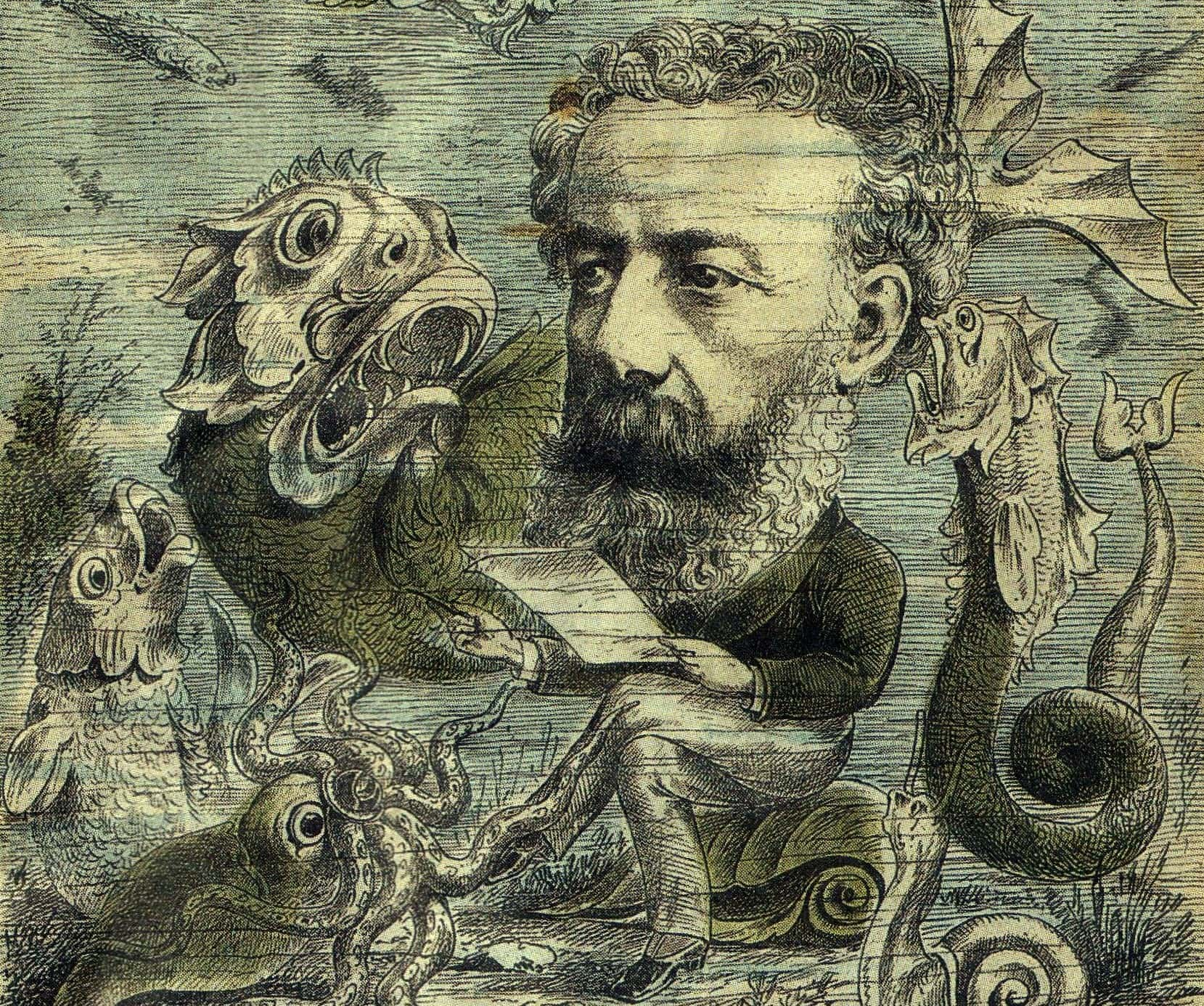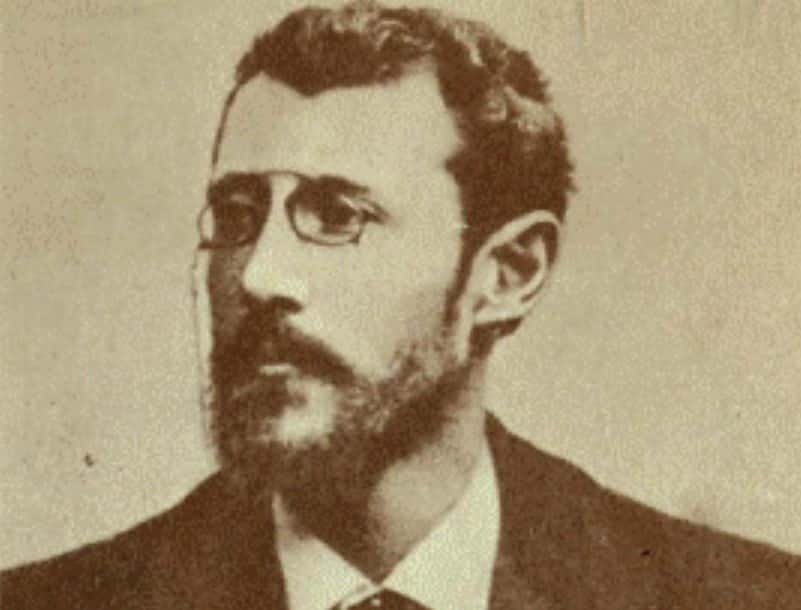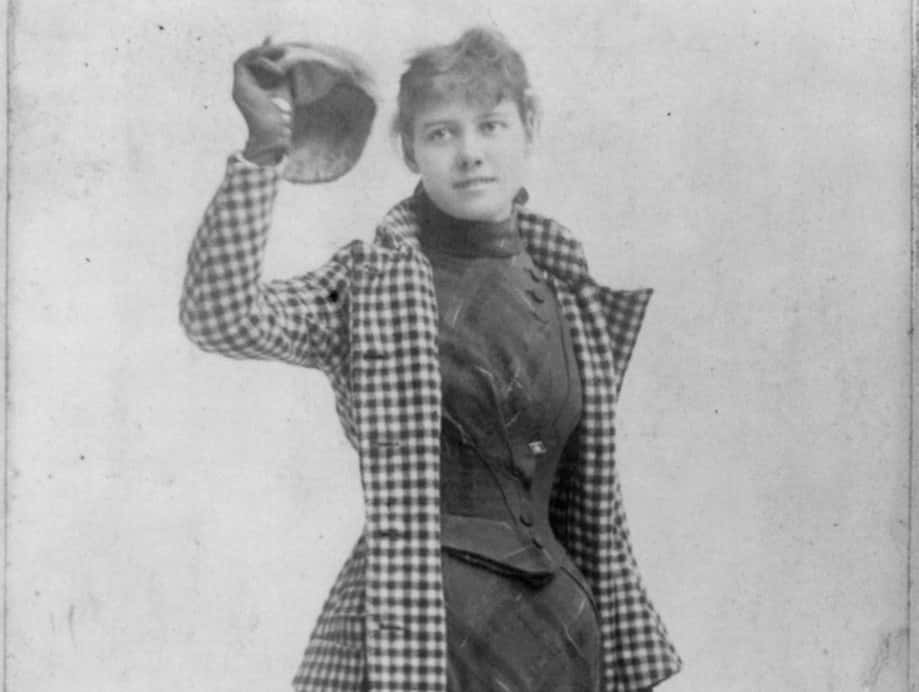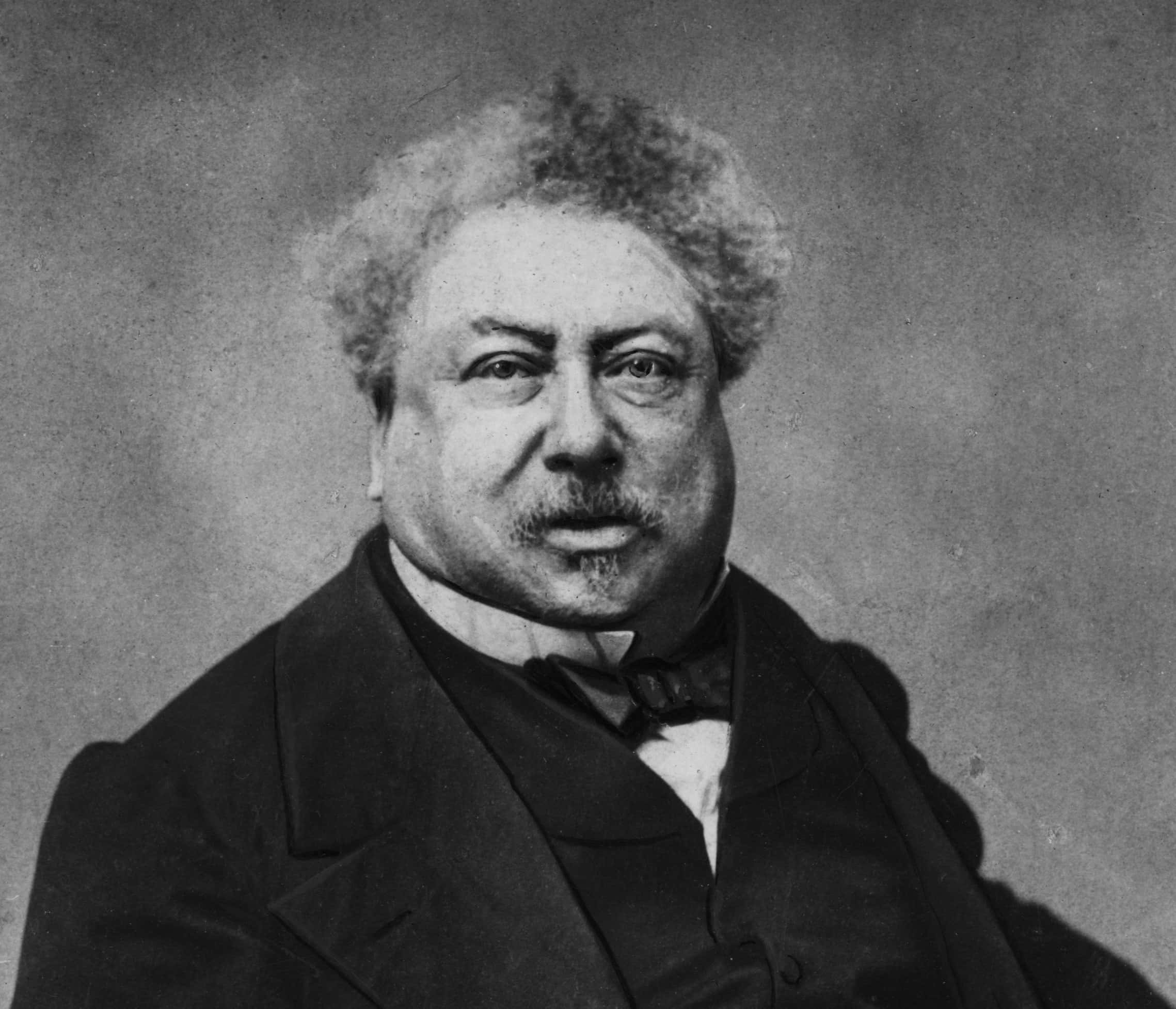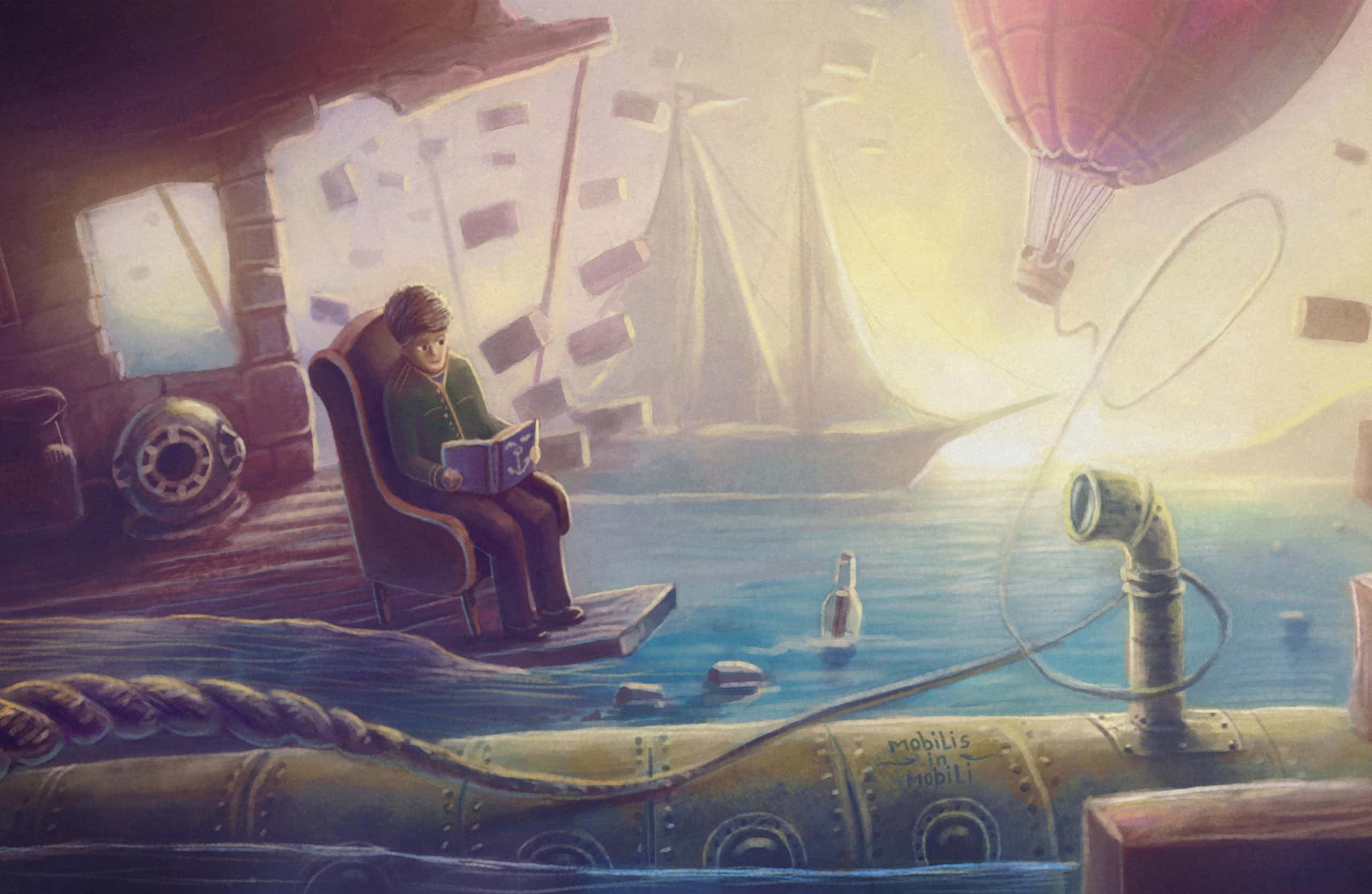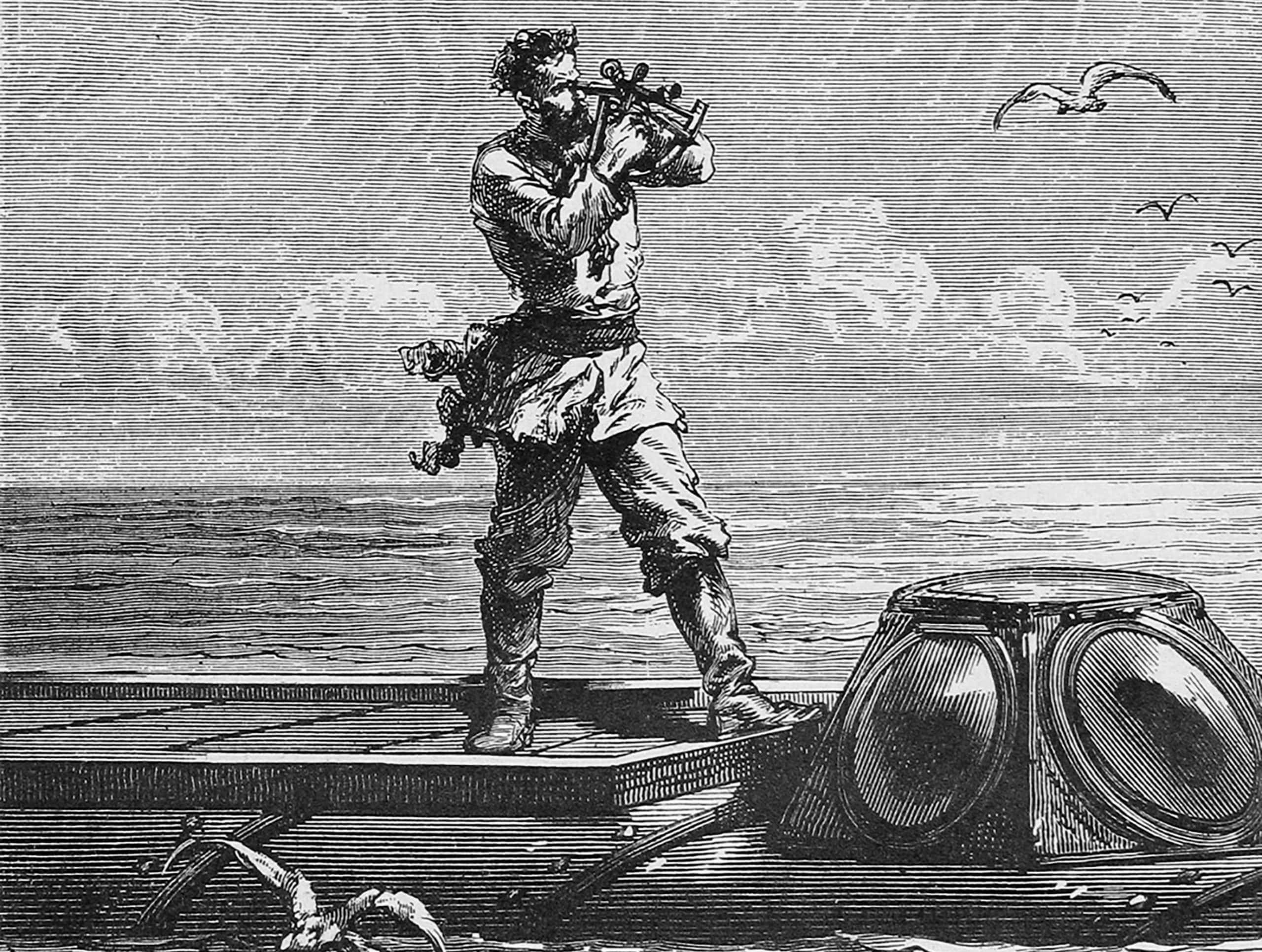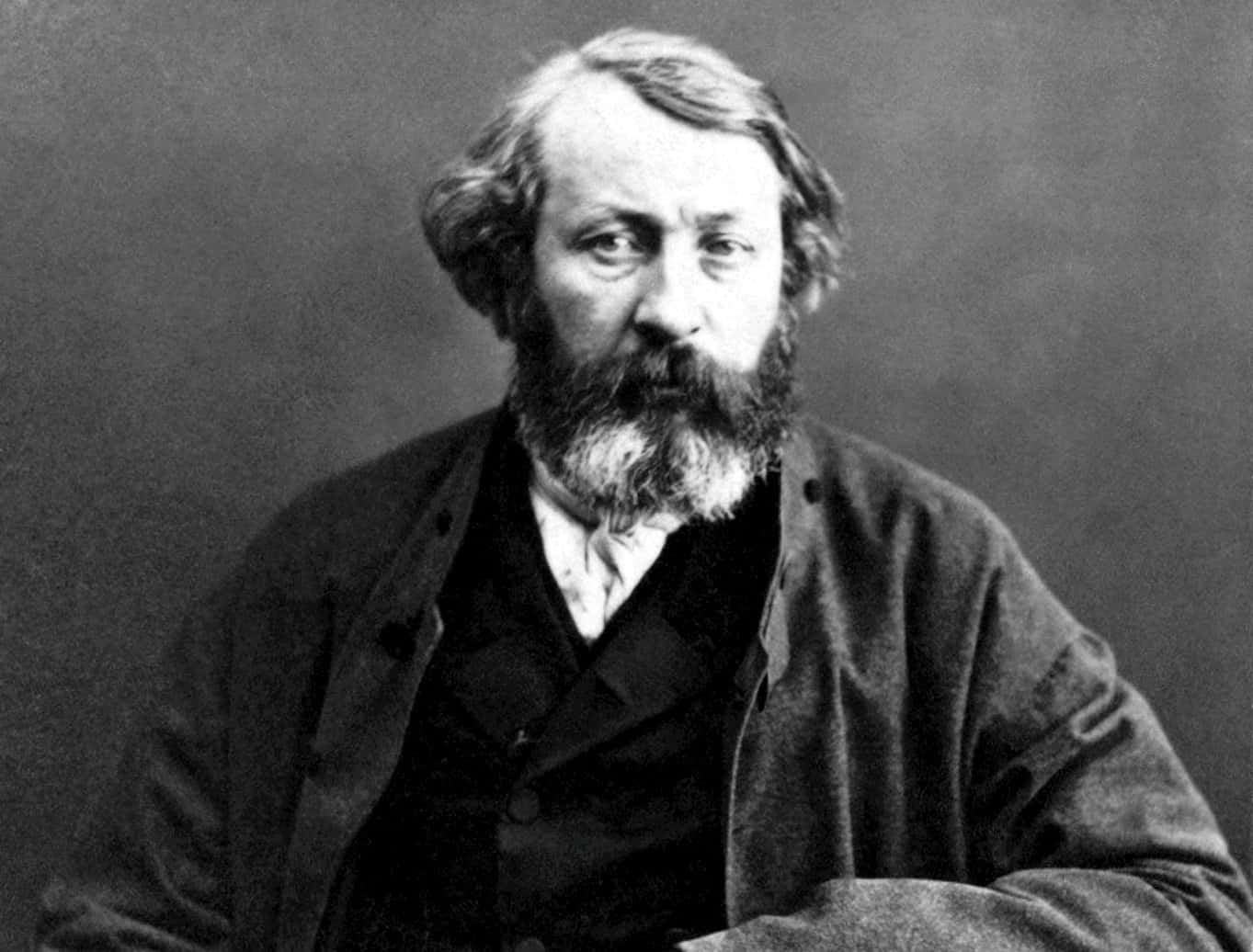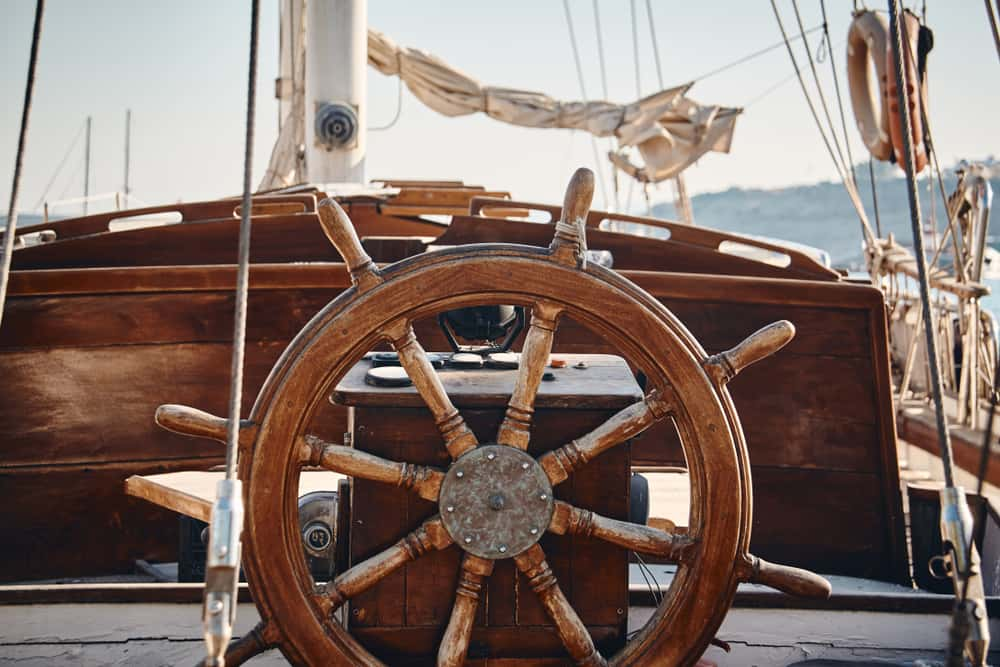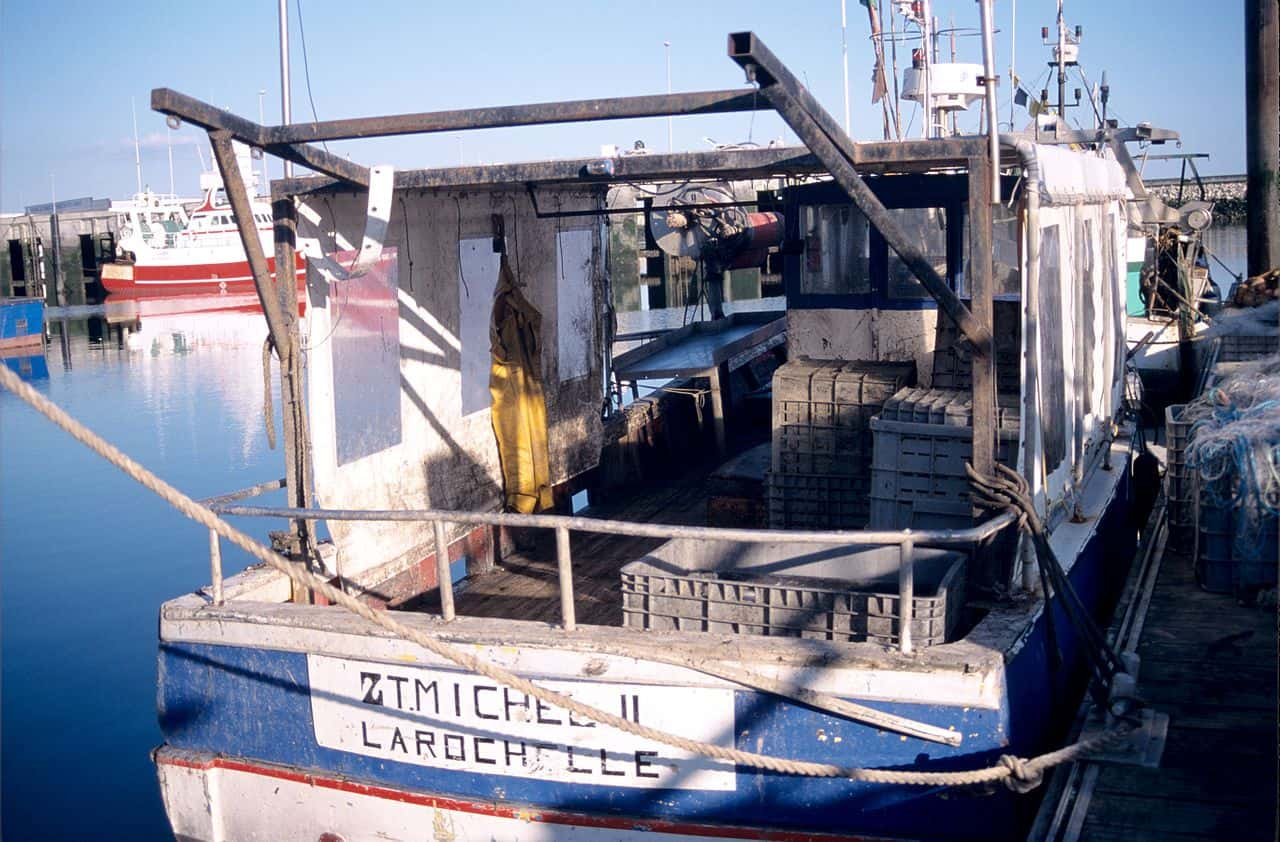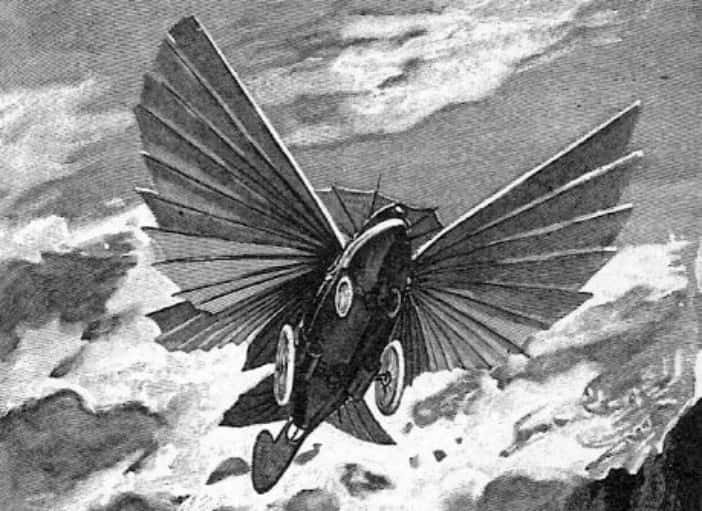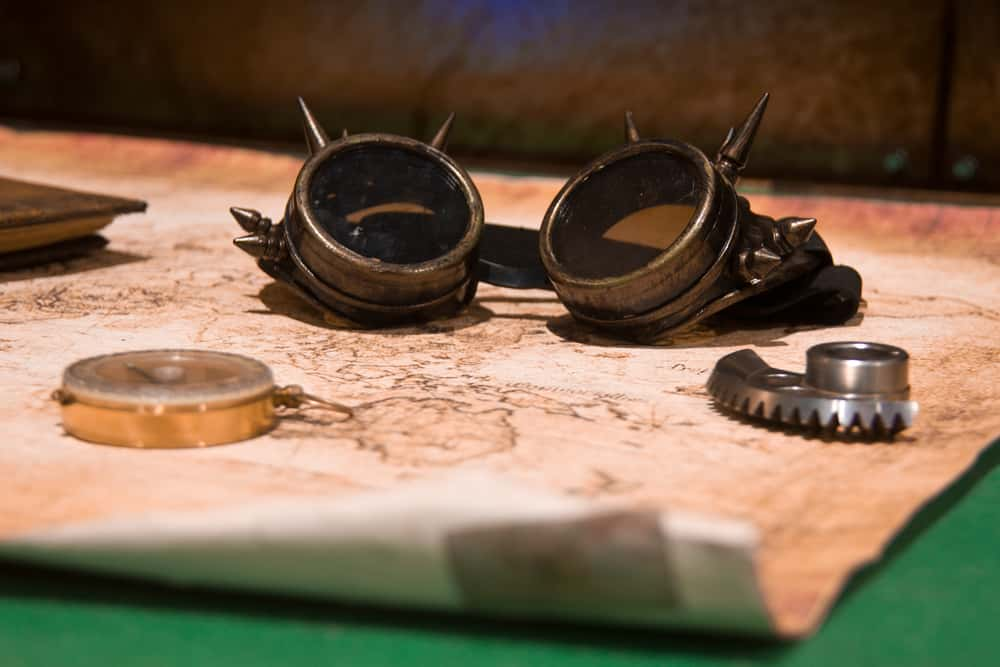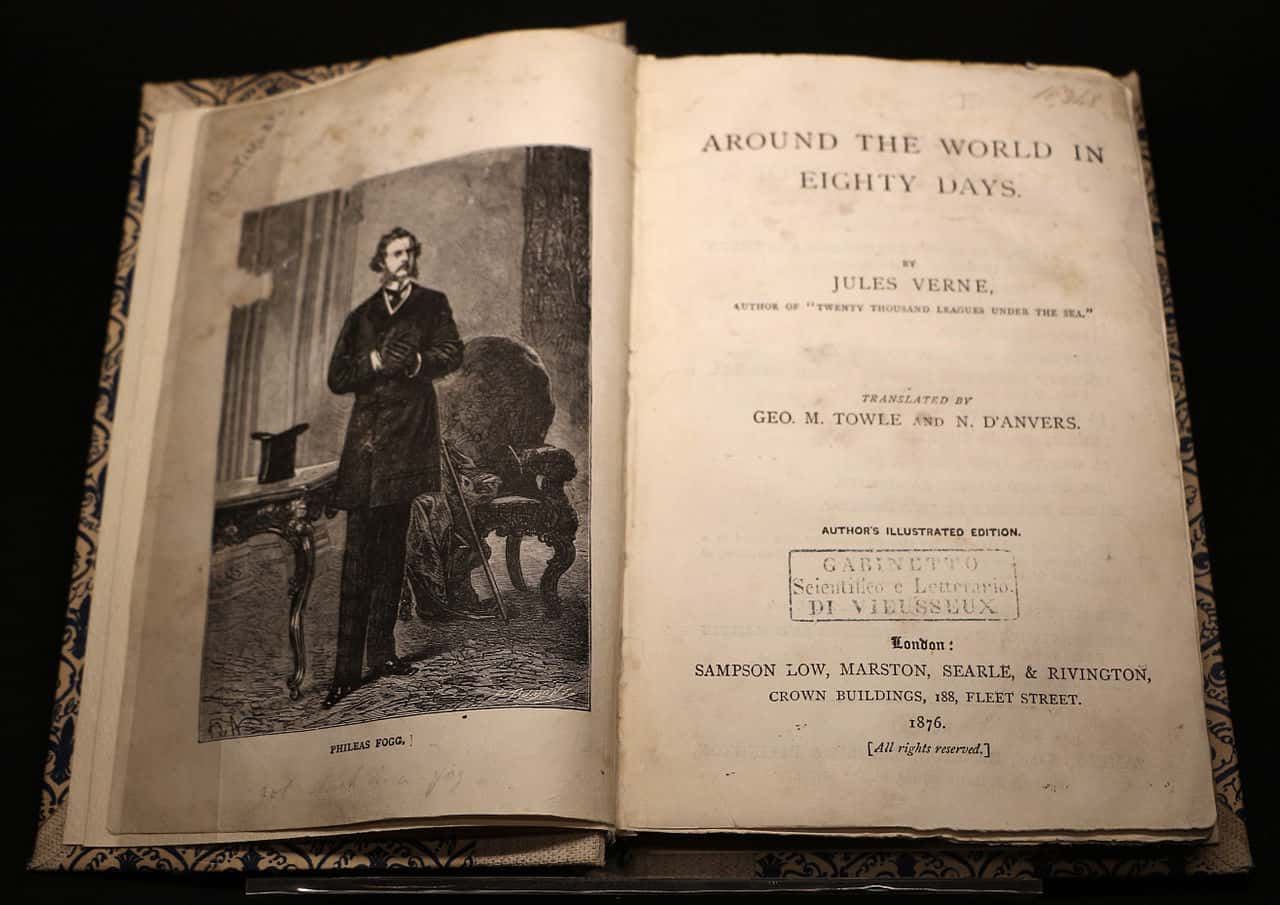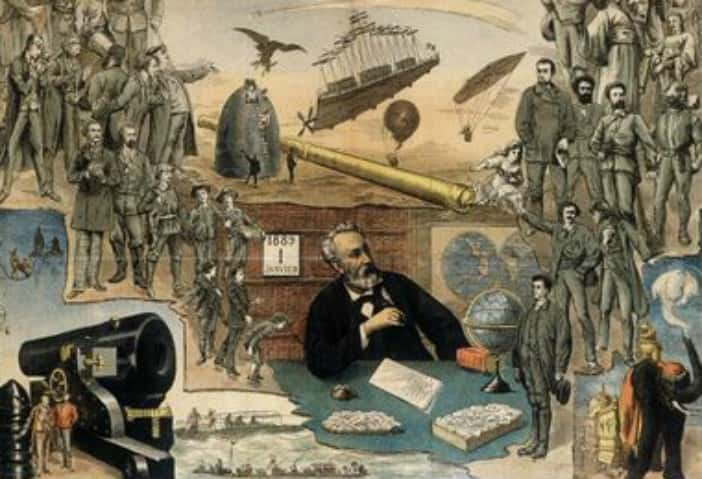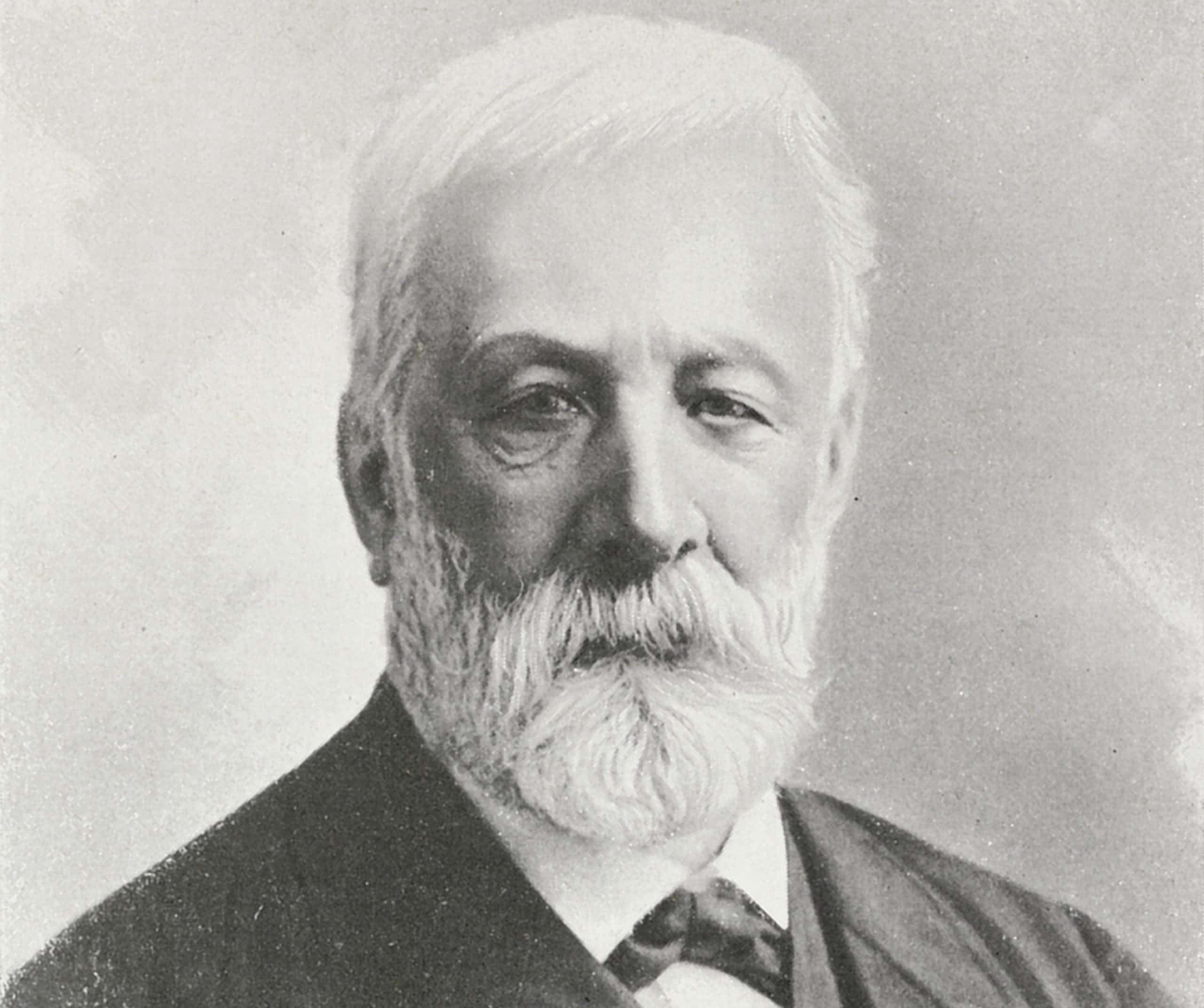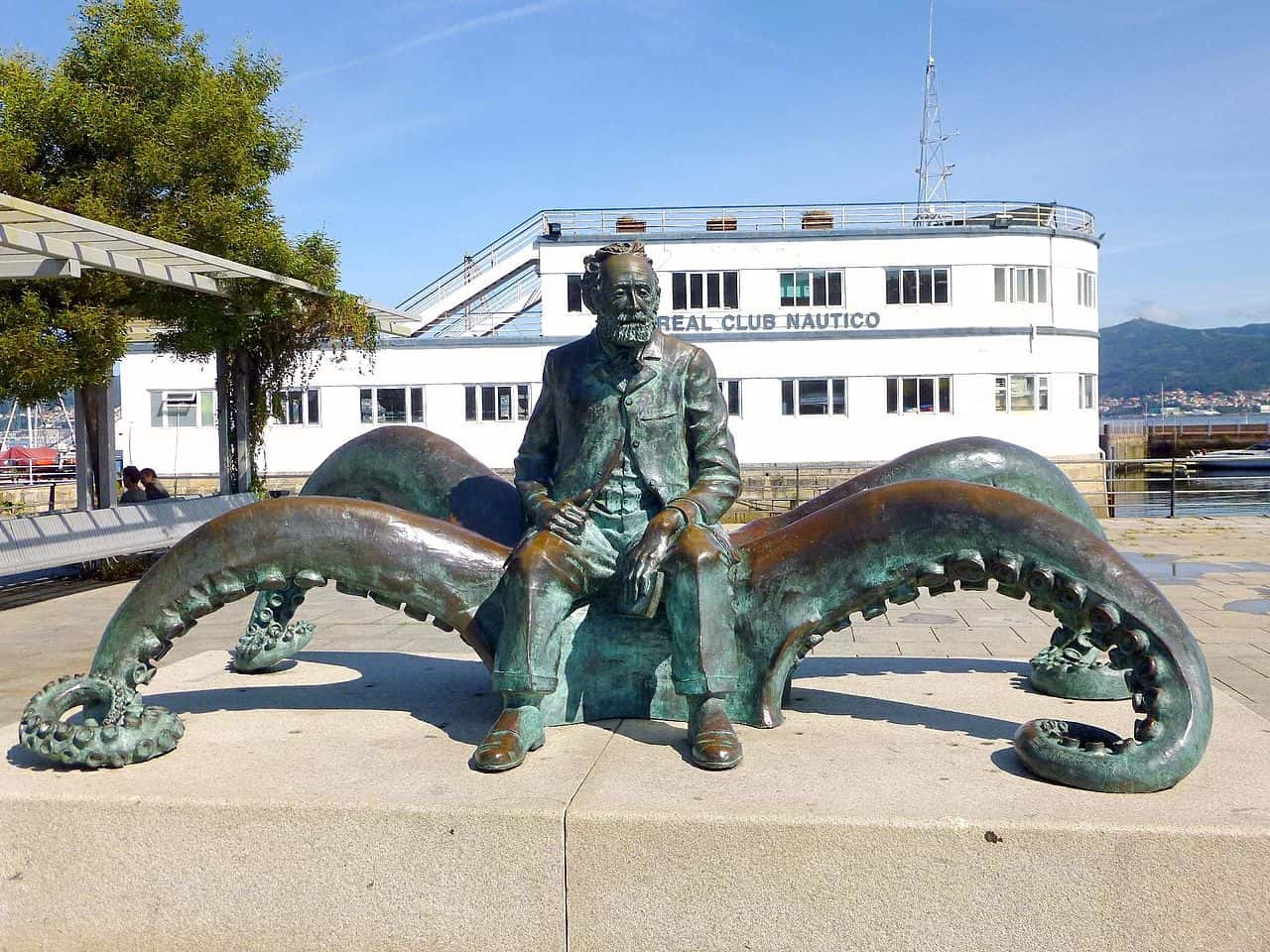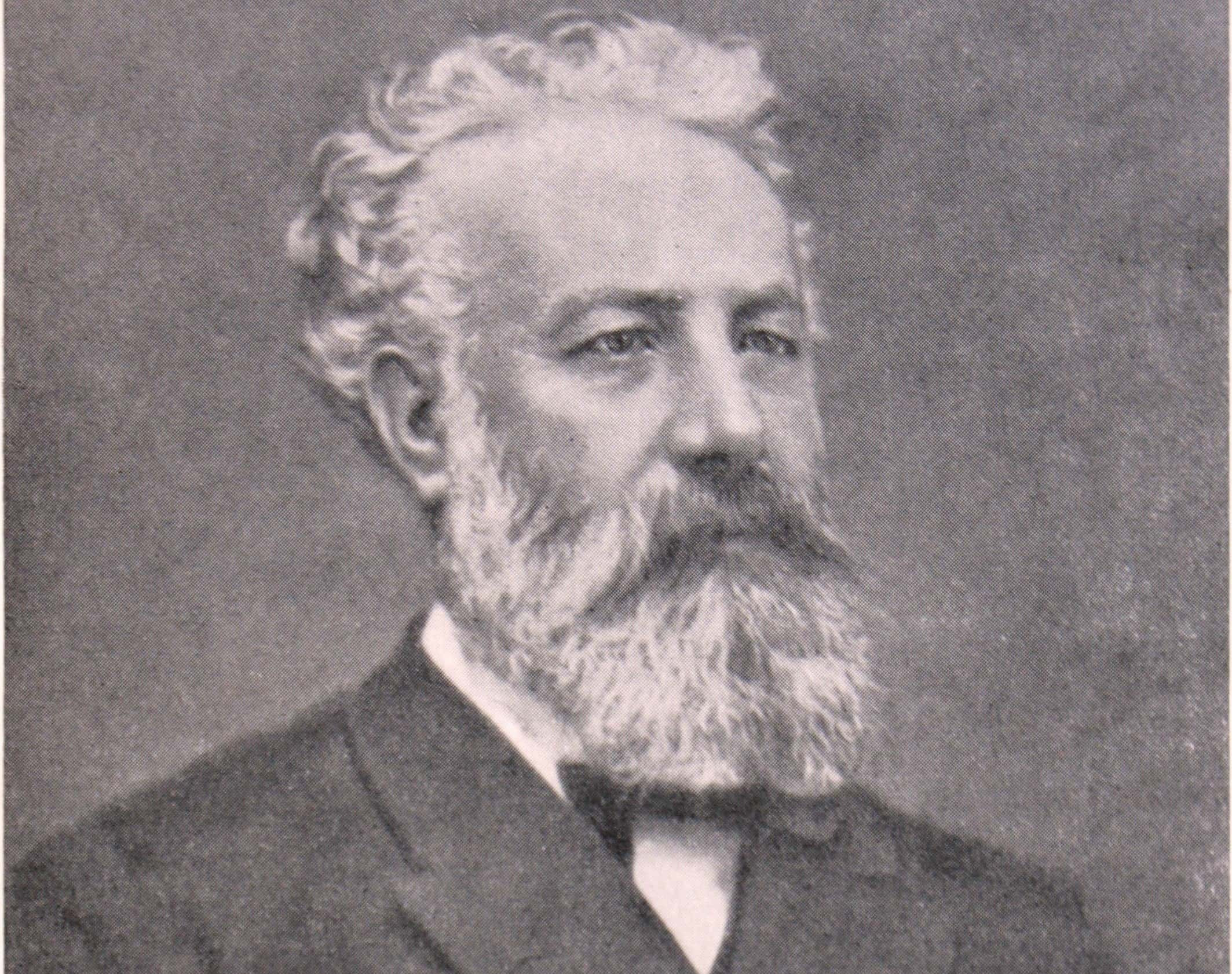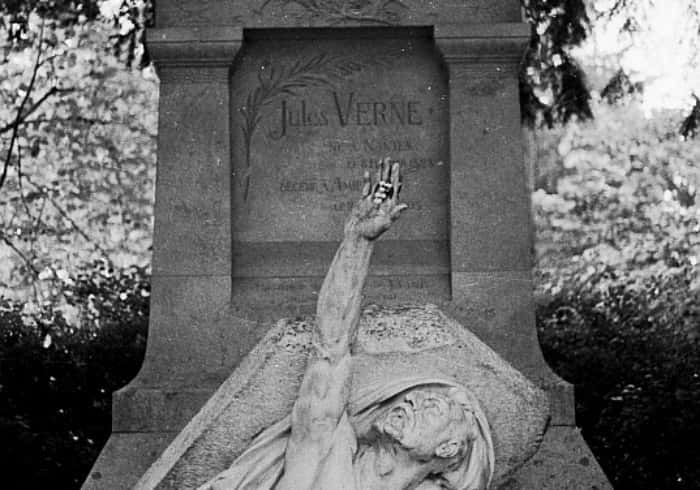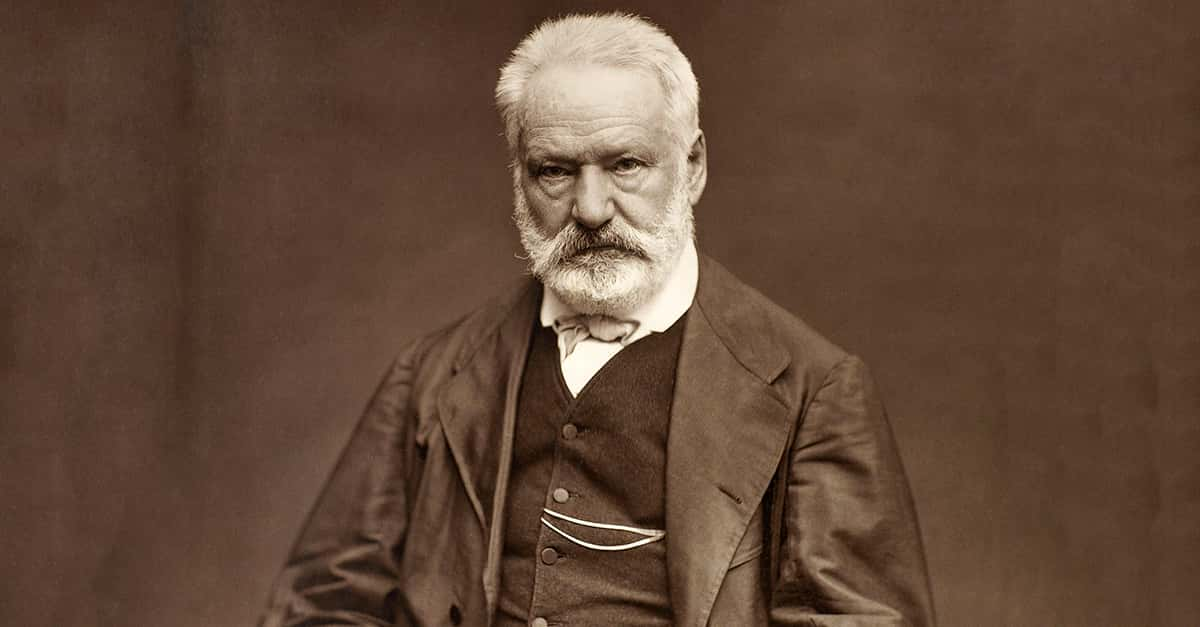It is impossible to overstate the impact Jules Verne had on human history. He not only inspired generations of authors, but also scientists and explorers. For those of you who don’t know, Verne is the much-lauded writer of such French classics as Twenty Thousand Leagues Under the Sea, Around the World in Eighty Days, and Journey to the Center of the Earth, among others. You’ve probably heard that he predicted the future like a literary Nostradamus figure, but this is an exaggeration and an oversimplification of who Verne was and what he accomplished. If you’re interested in learning more about him, we recommend you keep reading!
1. What an Eloquent Foreshadowing!
Jules Gabriel Verne was born in Nantes, France on February 8, 1828. To be more specific, he was actually born on Ile Feydeau, an island in the Loire River which was actually man-made.
2. It’s Not Who Did It First, It’s Who Did It Best!
One of Verne’s most well-known novels was the 1864 adventure story Journey to the Center of the Earth. Contrary to what has been claimed in the past, however, Verne didn’t invent the genre of subterranean adventures. Verne spent years researching geology, especially the novel Geological Evidences of the Antiquity of Man by Charles Lyell.
However, his novel’s success pushed the genre into the mainstream and inspired many other writers to write similar stories of their own. A noted example of a direct influence by Verne was the Pellucidar series written by Tarzan novelist Edgar Rice Burroughs.
3. The Little Boy Who Loved the Sea
One of the most well-known anecdotes about Verne’s life occurred when he was only 11 years old. In 1839, Verne secretly got himself the position of cabin boy on a ship. However, before his voyage was set to begin, Verne’s father dragged him off the ship. Verne was forced to promise his father that he’d only travel the world “in his imagination.”
4. Faithless Father
Because he was the eldest son in his family, Verne’s father assumed his son would inherit the family’s law practice. Even when Verne first began writing, his father assumed it was only going to be a glorified hobby.
5. Fanboy
One of Verne’s biggest inspirations was none other than French author Victor Hugo. Verne reportedly reread Hugo’s writing so often that he could recite “whole pages of Notre-Dame de Paris.” You might know that book by the English title The Hunchback of Notre-Dame. Verne even got to meet Hugo, presumably resulting in him eagerly reciting Hugo’s own passages to his face.
6. Bitten by the Literary Bug
Even when Jules Verne was studying law in Paris, and earning his license en droit in 1851, he never stopped writing. Verne spent every spare minute on crafting theater plays or experimenting with poetry.
7. The People You Know
One of the most important people in Verne’s lifetime was Pierre-Jules Hetzel. The two men first met in 1862 through a mutual associate. Hetzel was a publisher who had previously worked with such writers as George Sand, Victor Hugo, and Balzac. Like Verne, Hertzel wanted to combine entertaining literature with an education in science, and Verne’s heavily researched stories were exactly what Hertzel wanted.
Hertzel initially published Verne’s work through a literary magazine which was originally titled Bibliothèque illustrée des Familles.
8. The Fires of Love
After completing his first-year law exams in Paris, Jules Verne returned to Nantes while preparing for his second year. It was during this stay that Verne fell head over heels for a young woman named Rose Herminie Arnaud Grossetiere. Such was his passion that he wrote Grossetiere around 30 love poems.
9. Mr. And Mrs. Capulet! Nice to Meet You!
Jules Verne had met his first love—but it was doomed to a heartbreaking end. Grossetiere’s parents didn’t approve of Verne. Disliking the fact that Verne was a student without a guaranteed career, Grossetiere’s parents married their daughter to someone else, who was a landowner—and who was ten years older than Grossetiere.

Sign up to our newsletter.
History’s most fascinating stories and darkest secrets, delivered to your inbox daily. Making distraction rewarding since 2017.
10. Not Again!
Sadly, Jules Verne had a really bad track record when it came to love. Rose Grossetiere wasn’t even the first time that Verne fell in love with someone who he couldn’t be with. As a teenager, Verne went gaga for Caroline Tronson, and he went the extra mile to make his affections known. He took Tronson to dances, he wrote love poems for her, and he lavished her with gifts.
Unfortunately, Tronson wasn’t feeling romantic thoughts in kind—we can assume it had something to do with the fact that Verne and Tronson were cousins.
11. What a Twist!
Anybody who’s read Verne’s Twenty Thousand Leagues Under the Sea will remember that the submarine which travels those leagues was named Nautilus. When it came time to pick a name for the submarine, Verne did his homework thoroughly. Back in 1800, American inventor Robert Fulton designed and built what is often considered to be the first practical submarine ever made. The ship’s name was Nautilus!
12. Verne Would Have Been Proud
As you can imagine, the popularity of Verne’s Twenty Thousand Leagues Under the Sea resulted in several navies around the world bestowing the name Nautilus to their ships. To give a prime example, the US gave the name of Captain Nemo’s famous submarine to the world’s first operational nuclear-powered submarine.
In 1958, the USS Nautilus became the first submarine to make a submerged transit of the North Pole.
13. How Can You Mend a Broken Heart?
Jules Verne was deeply affected by his separation from Rose Grossetiere—and it came out in disturbing ways. Verne drunkenly wrote a letter which laid bare his anguish over lost love, and then sent that letter…to his mother! Even when he was a highly accomplished writer, Verne never forgot that part of his life. Several books by Verne feature the theme of a young woman being married off against her wishes.
14. No Need to Thank Me!
Verne’s work was so celebrated, even in his own lifetime, that he actively participated in adaptations of his books into other formats. In 1874, Verne collaborated with another writer on a stage adaptation of Around the World in Eighty Days. Meanwhile, the renowned innovator of film, George Méliès, made a short film adaptation of Twenty Thousand Leagues Under the Sea as early as 1907.
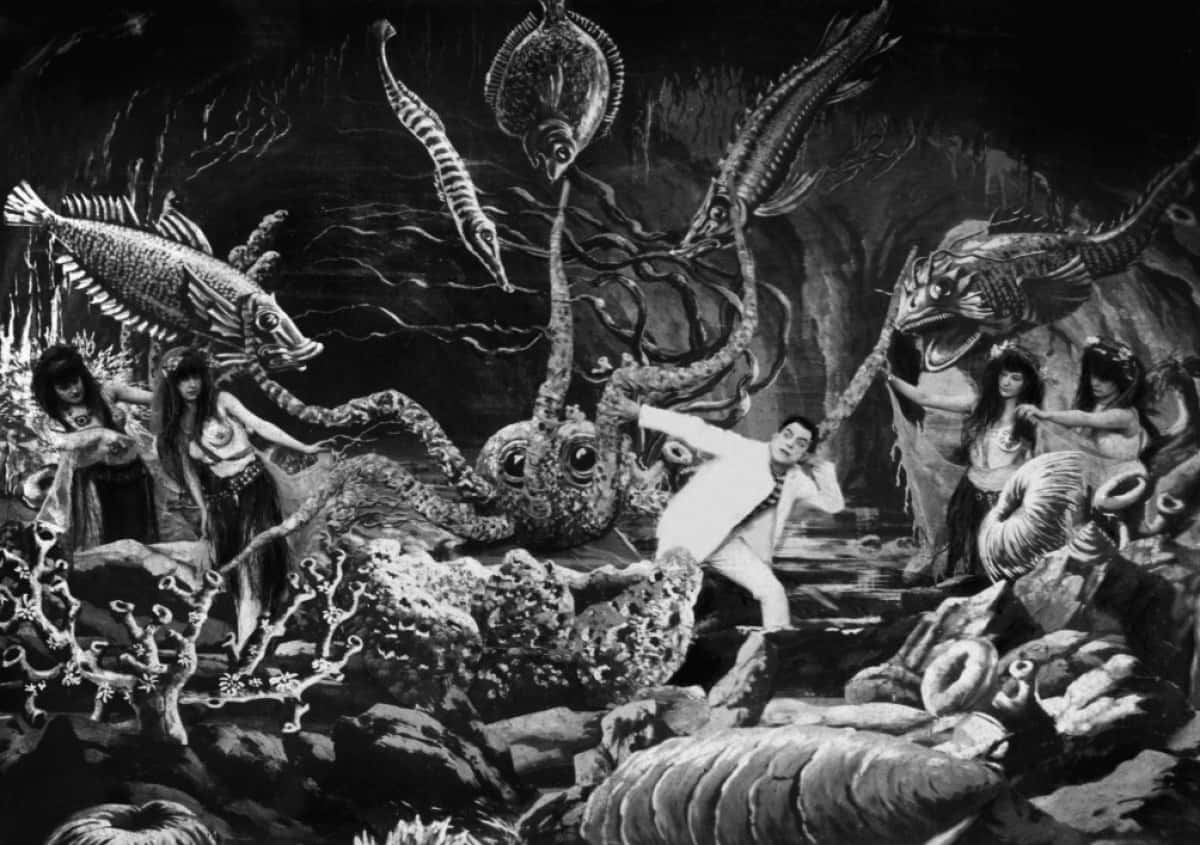
15. It is the Sound of Angry Men
When Jules Verne began his second year of law school in Paris, he had either the best or the worst timing, depending on whom you ask. The year was 1848, and a new revolution swept away the old monarchy to replace it with a new republic. While Verne never built any barricades or asked if you hear the people sing, Verne did bear witness to the revolution’s violent episode and wrote about what he saw.
16. Thanks, Juley!
For those of you who don’t know, one of the pioneers in the field of subway design was Simon Lake. Lake openly stated that he was partly inspired by Twenty Thousand Leagues Under the Sea, that age-old story about three men who travel the world on an advanced submarine in the company of Captain Nemo and his crew.
17. A Guideline of the Stars
Another field that Jules Verne influenced was rocketry and space exploration. Verne’s novels about space travel were named by the astronauts of the Apollo 8 mission as inspirations. In addition, rocketry innovators Robert Goddard and Hermann Oberth praised Verne.
18. Your Number’s Up! Wait, no it Isn’t
In 1851, Jules Verne was forced by law to enlist in the French military, much to his horror. Verne appalled his father with letters in which he denounced soldiers as “domestic servants in livery.” It was also Verne’s belief that one needed to “abandon all dignity” in the military. He was ultimately spared from military service due to the sortition process giving him a break for once.
Verne maintained his staunch anti-war stance for the rest of his life.
19. The Dream, However Brief
The same year that Jules Verne finished his license en droit and narrowly avoided the military, he managed to get himself a writing job. It was when he first met Pierre-Michel-Francois Chevalier. At the time, Chevalier was the editor-in-chief of the French literary magazine Musée des familles. Chevalier offered Verne a chance to write short stories with an educational bent towards history, science, and technology.
Verne was thrilled to have the opportunity. He spent around two years writing for the magazine before a quarrel with Chevalier resulted in the two men parting ways.
20. What a Meet-Cute!
In the spring of 1856, Jules Verne traveled to Amiens so he could be the best man at his friend’s wedding. While he was there, Verne caught the eye of Honorine de Viane Morel, the bride’s sister. Even though she was 26 and already had two children, Verne found himself falling in love.
21. Game Theory Wins Again!
While Jules Verne was spending his time with Honorine de Viane Morel, her brother offered Verne an opportunity he couldn’t refuse. The brother knew a broker, and he wanted Verne to join him business with said broker. Verne saw it not just as a good financial decision, but also an excuse to spend more time with Morel and her family.
Verne secured his father’s support and became an agent de change for a few years. During that time, Verne and Morel were married.
22. “Once Upon a Time…”
While Verne was writing for the Musée des familles, he indulged his thirst for knowledge. He spent long stretches of time researching topics in the Bibliotheque nationale de France. He also managed to meet Jacques Arago, an explorer who still traveled despite the fact that he was going blind in his older years. Despite his condition, Arago could recall many incredible sights and experiences, and he was only too happy to regale Verne with them.
It was through these interactions which inspired Verne’s later ventures into travel writing.
23. An Ingenious Idea
Pierre-Jules Hetzel’s plan for publishing Verne’s novels was creating the series titled Extraordinary Journeys. Both men were enthusiastic about creating imaginative stories that provided a great amount of research into how the world worked. The arrangement was that Verne would publish his novels chapter by chapter in Hetzel’s magazine before they arrived in their book form just in time for Christmas.
24. Follow the Money
Jules Verne was a lucrative writer during his prime, publishing two volumes per year. He was able to make a living through his writing alone, but even then, he had to supplement his income. A large part of his finances didn’t actually come from writing books, but rather, from writing theatrical adaptations of said books!
25. The Mysterious Symptoms
During his lifetime, Verne suffered from a number of ailments. The most long-lasting of these ailments were the stomach cramps that he frequently reported having. Although he never figured out the reason for these cramps, historians suspect that Verne had undiagnosed colitis.
26. Welcome to the Waves, Part I
If you recall that anecdote about his being dragged off a boat by his father, rest assured that Verne did eventually get the chance to make a sea voyage. Verne was approached by an old friend in 1858 with the chance to go on a sea voyage free of charge. The voyage was organized by the friend’s brother, with the ship traveling to from Bordeaux to Liverpool, and then to Scotland.
Verne had such a great time on the voyage that he used the experience for his semi-autobiographical book Backwards to Britain.
27. Welcome to the Waves, Part II
Of course, there was one negative consequence to Verne’s first sea voyages. In 1861, Verne and his friend went on a second, far more ambitious sea voyage which took them all the way to Scandinavia. However, Verne got some news that caused him to leave his friend in Denmark and travel back to France as fast as possible.
He was too late, however, to be with his wife Honorine when she gave birth to their son, Michel.
28. What Goes Around Comes Around
In a rather strange bit of irony for the prodigal son, Verne clashed furiously with his own son, Michel. Verne disapproved of Michel’s choice of spouse—an actress—and was outraged when Michel defied him and got married anyway. Michel also began an affair with an underage woman, having two children with her. Aside from all that, Michel quickly incurred massive financial debts, which also rubbed Verne raw.
However, the relationship between father and son did eventually improve as Michel got older.
29. A Haunting Thought
At the age of six, Verne was sent to a boarding school, whose main teacher was the widow of a naval captain. The captain had disappeared while voyaging some 30 years prior, but Verne’s teacher was convinced that he was alive, marooned on an island like Robinson Crusoe, and he’d return one day. The concept never left Verne, and several of his books later dealt with the theme of someone being stranded in a strange place with no way of leaving.
30. Must Have Been a Heck of a Conversation
One of the more interesting aspects of Verne’s legacy revolved around his novel Around the World in Eighty Days. The popularity of that novel resulted in people wondering whether they could beat Phileas Fogg’s record. Daredevils and thrill seekers made circumnavigational journeys of their own in the hope to make a new record for world travel.
One of the most famous examples was Nellie Bly, who even got to meet Verne himself while she was voyaging around the world.
31. Vote for Me!
During his adulthood, Jules Verne was also involved in local politics. In 1888, Verne ran for the position of town councilor in his native Amiens. In the classic history of entertainers entering politics, Verne won the election and became known as a reformer. He ultimately served on the town council for 15 years.
32. In the Name of Verne
It should surprise nobody that France has repeatedly paid tribute to Verne’s legacy. Over the years, his name has been given to a university, two French ships, an express train, and a restaurant in the Eiffel Tower.
33. Prejudice Again?
Verne’s work, as he originally intended, was meant for an adult audience. However, most English-language publishers assumed that his seemingly fanciful stories were meant for younger readers. This attitude ruined many translations of Verne’s work into English. His stories were often cut down and edited to form abridged, badly translated copies of the original story.
Things have improved since, but generations of English readers were getting a third-rate version of Verne for so long!
34. It’s a Small World, After All
If we’re talking about measuring an author’s success by number of translations, then Jules Verne is one of the most accomplished authors of all time! With his books being translated into more than 150 languages, he is second only to Agatha Christie in the world of writers.
35. Juley & Al
In a remarkable case of legends crossing each other’s paths, Verne was familiarizing himself with the salons of Paris when he met the legendary Alexandre Dumas, author of The Three Musketeers and The Count of Monte Cristo. In 1850, just a year after they’d first met, Verne joined forces with Dumas’ son, Alexandre Jr., to produce a play at the prestigious Theatre-Historique.
36. Great Minds Think Alike
As well as working creatively with his son, Verne also had Alexandre Dumas’ support when he came up with a new kind of novel to write. Verne had literal years’ worth of research information in his mind, and he wanted to put it to good use. This led him to creating something that he called a Roman de la Science (novel of science). Dumas had previously tinkered with a similar concept, so he was only too happy to help Verne however he could.
37. Finding Nemo
Few of Verne’s characters are so well-known as the enigmatic figure called Captain Nemo. One thing which makes him so mysterious in the 1870 novel Twenty Thousand Leagues Under the Sea is that we never find out who he is, what his backstory was, and where he came from. However, this wasn’t Verne’s original intent. He initially made it clear that Nemo was Polish nobleman fleeing from his home country, where his family had been slain by Russian soldiers.
Verne’s publisher, Pierre-Jules Hetzel, objected, however, as he feared that Verne would alienate millions of potential Russian readers. Nemo’s origins remained a mystery until Verne made Nemo a character in The Mysterious Island, where he’s revealed to be an Indian prince whose family died while battling Britain’s East India Company.
38. That’s When Things Got Awkward
This conflict over Captain Nemo’s origins was the straw that broke the camel’s back for Verne and Hetzel’s work relationship. Prior to that, Verne was only too happy to acquiesce to Hetzel’s editing notes. However, following that conflict, Verne became colder, turning down Hetzel’s suggestions.
39. Back to Sea, Part I
By 1867, Verne was making a good enough living to do what every rich person does and purchased a boat. Specifically, it was a small yacht that he christened St. Michel after his own son. Verne loved to take his yacht across the seas surrounding Europe. Verne traveled as far as the English coast and back, spending a lot of his isolation working on manuscripts for what later became Around the World in Eighty Days and Twenty Thousand Leagues Under the Sea.
40. Back to Sea, Part II
Jules Verne wasn’t finished with one boat purchase, however. As his wealth and fame increased, Verne replaced his first yacht with another one, naming it the St. Michel II. Verne eventually purchased the St. Michel III, a large steam yacht that Verne needed a small crew to operate. Verne used this third vessel to go all the way down the Mediterranean or the Scottish coast.
41. What’s the Point Anymore???
For all of Verne’s love for knowledge and exploring the world, his writing took a sharp turn in 1886, when he suffered a series of heartbreaking losses. That was the year that Verne lost not only his mother, but also his long-time publisher, Pierre-Jules Hetzel. He was also facing financial troubles, and was clashing frequently with his son, Michel.
As a result of all this trouble, Verne’s writing became pessimistic. In novels such as Master of the World and The Floating Island, Verne examined the consequences of technology being used in the wrong way by people.
42. Talk About Retro!
One genre which Verne directly influenced from its very conception was the steampunk genre. In case this doesn’t mean anything to you, a steampunk-style story is a glamorization of science fiction which was conceived during the 19th century. Verne’s style was naturally important, but his characters have also been reused for steampunk stories.
The most famous example of this is the appearance of Captain Nemo in the Alan Moore graphic novel The League of Extraordinary Gentlemen.
43. No, I Don’t Predict Futures! Stop Asking!
One aspect of Verne’s writing which enthralled readers over the centuries was that more and more of his stories became increasingly realistic. He has often been named as a parent of the science fiction genre, along with Mary Shelley and Voltaire. Verne wrote about scientific inventions and advances which were fantastical when he first wrote them out.
What is forgotten, however, is that Verne based all that he wrote on a lifetime’s amount of research into various topics. He also openly fought the notion that he’d been a prophet.
44. The Christopher Tolkien of his Day
Verne’s son, Michel, followed in his father’s footsteps in more ways than one. Michel became a writer as well, though he was considered inferior in talent to his famous father. When Verne died, it was Michel who oversaw the publication of Verne’s last manuscripts—but there was a controversial twist to this story.
Michel revised several of these manuscripts, or even passed off his own manuscripts as Verne’s, which angered many of the author’s fans.
45. Too Famous?
For all Verne’s success as a writer in his own lifetime, he was subjected to a critical backlash. Verne’s books were wildly popular in France, and he achieved even greater success with theatre adaptations of his work. However, this mainstream success led critics to dismiss him as writing popular entertainment rather than serious literature. Verne was denied membership in several prestigious literary society, much to his devastation.
Moreover, abridged versions of his stories for children became more popular than his original versions! After a lifetime of research and dedication to writing, only to be rejected by the upper echelon of his society, Verne lamented "The great regret of my life is that I have never taken any place in French literature."
46. Second Wind
It wasn’t all bad news for Verne’s legacy, however, though he did have to die before things turned around again. With his passing, a cult formed within the artistic community which rallied around Verne as a serious author worthy of literary study. The late 20th century also revitalized an interest in Verne’s writing, helped in no small part by the rise of film and television adapting his work.
Even in English-speaking parts of the world, who were mostly responsible for Verne’s overhyped reputation as a prophet, there is increasing respect for his creative talents.
47. Lashing Out
Verne had a nephew named Gaston, who tragically suffered from a mental illness that was never diagnosed—and it led to a terrifying incident that nearly took Verne’s life. Gaston often couldn’t control his violent outbursts. In 1886, Verne was coming back home when he was suddenly accosted by Gaston, who was brandishing a pistol!
Before anyone could stop him, Gaston shot Verne twice, including once in his left leg.
48. Long Term Effects
The attack on Verne by his own nephew resulted in said nephew being quietly sent to a mental asylum. As for Verne, the wounds did significant damage to the 58-year-old author. He never fully recovered from the wound in his leg, which was further damaged by an infection when the bullet injury didn’t heal quickly enough. Verne walked with a limp for the rest of his life.
49. Is That Irony?
Verne was publishing original content at the end of the 20th century! In 1989, his great-grandson rediscovered one of his lost novels . Five years later, publishers put out Paris in the Twentieth Century, making the title synonymous with its years of publication!
50. Farewell, Jules
Verne lived long enough to welcome the 20th century. However, he struggled with diabetes in his final years before succumbing to the effects. He was 77 years old when he died on March 24, 1905.

